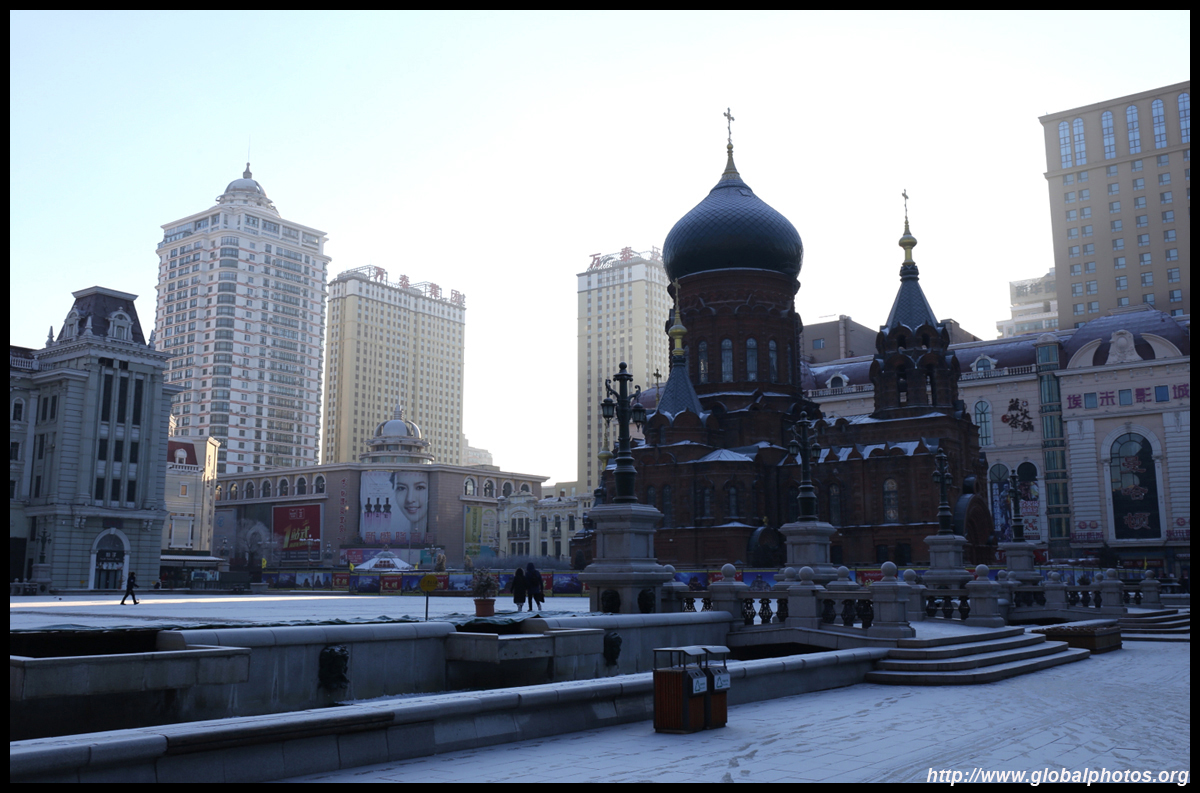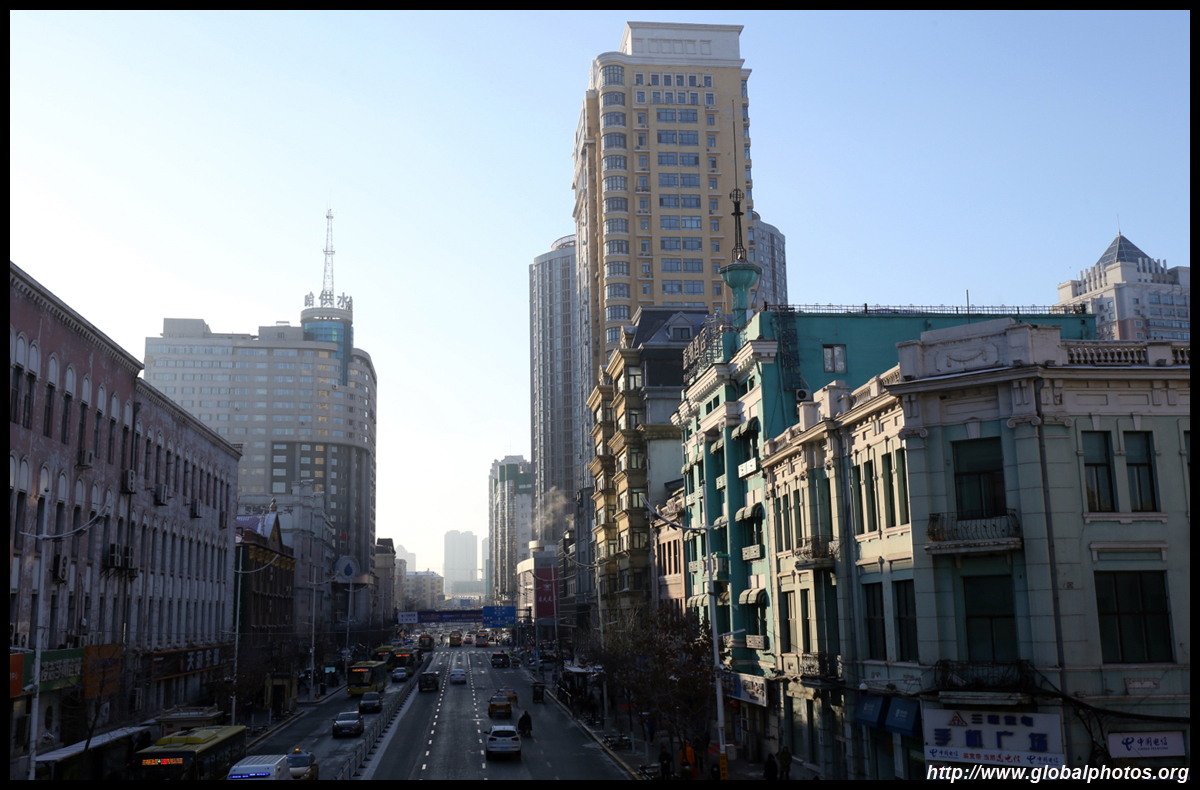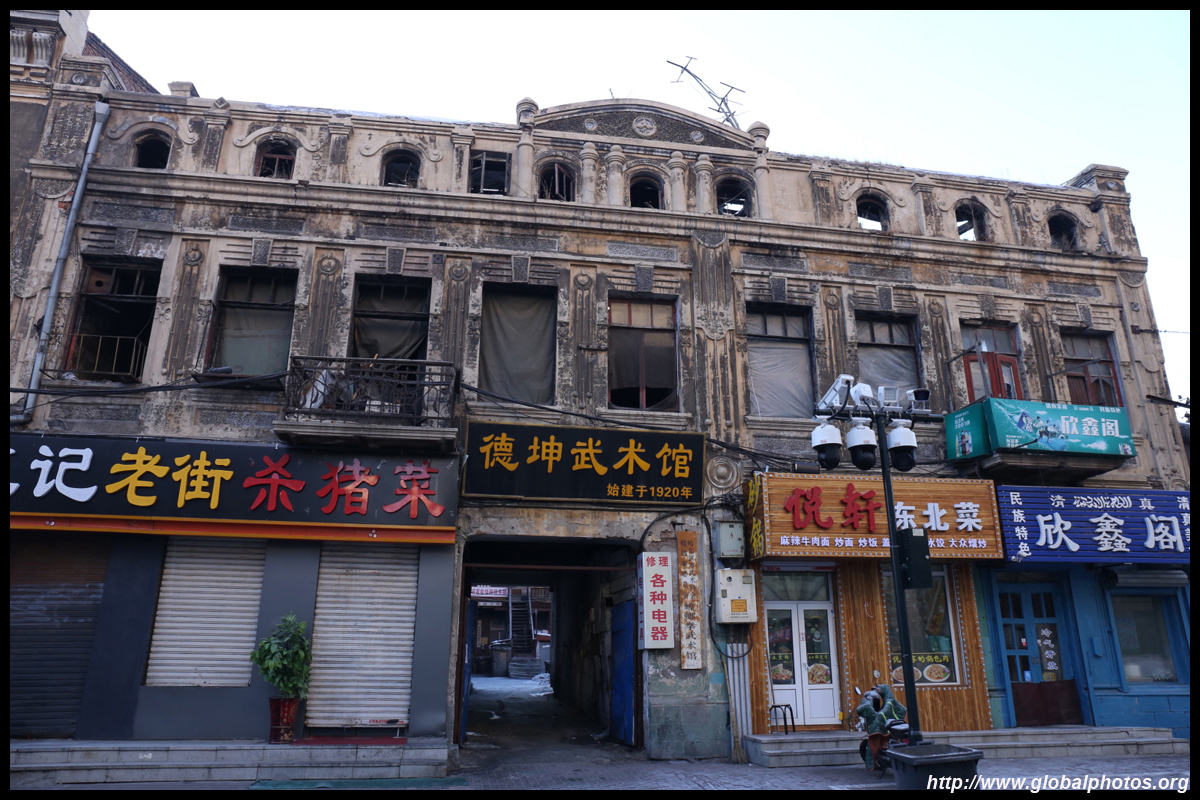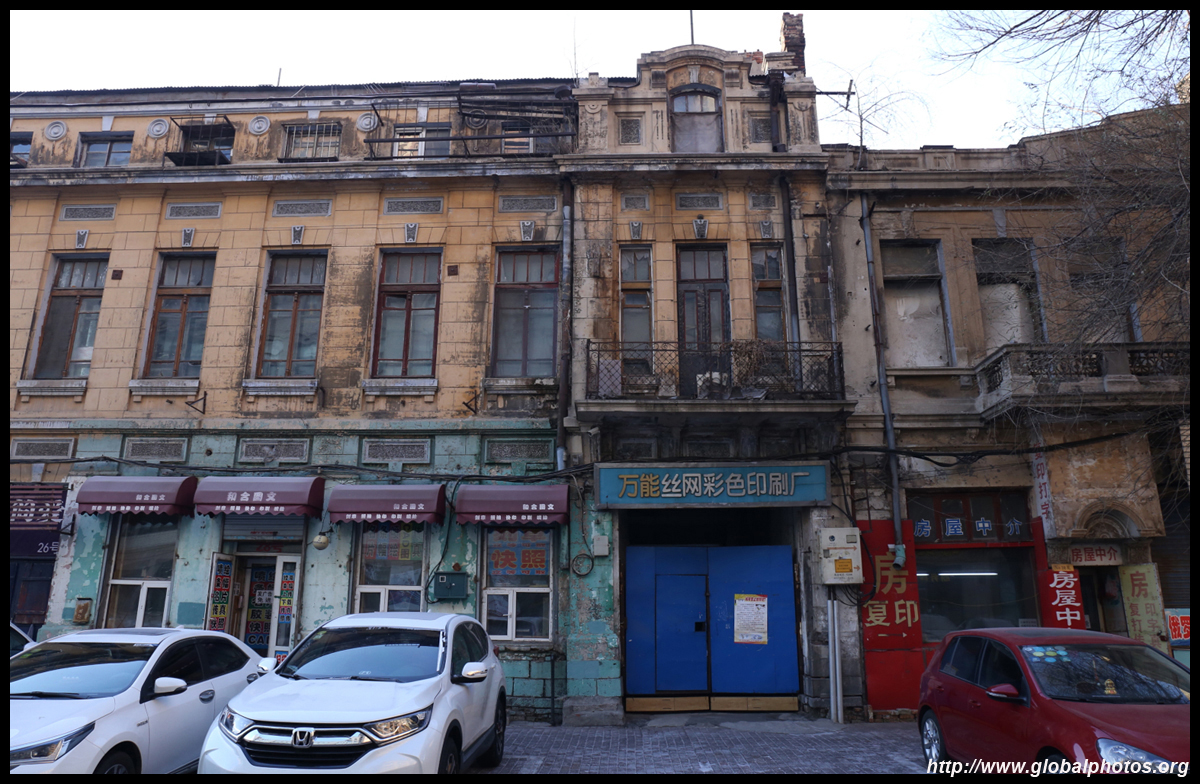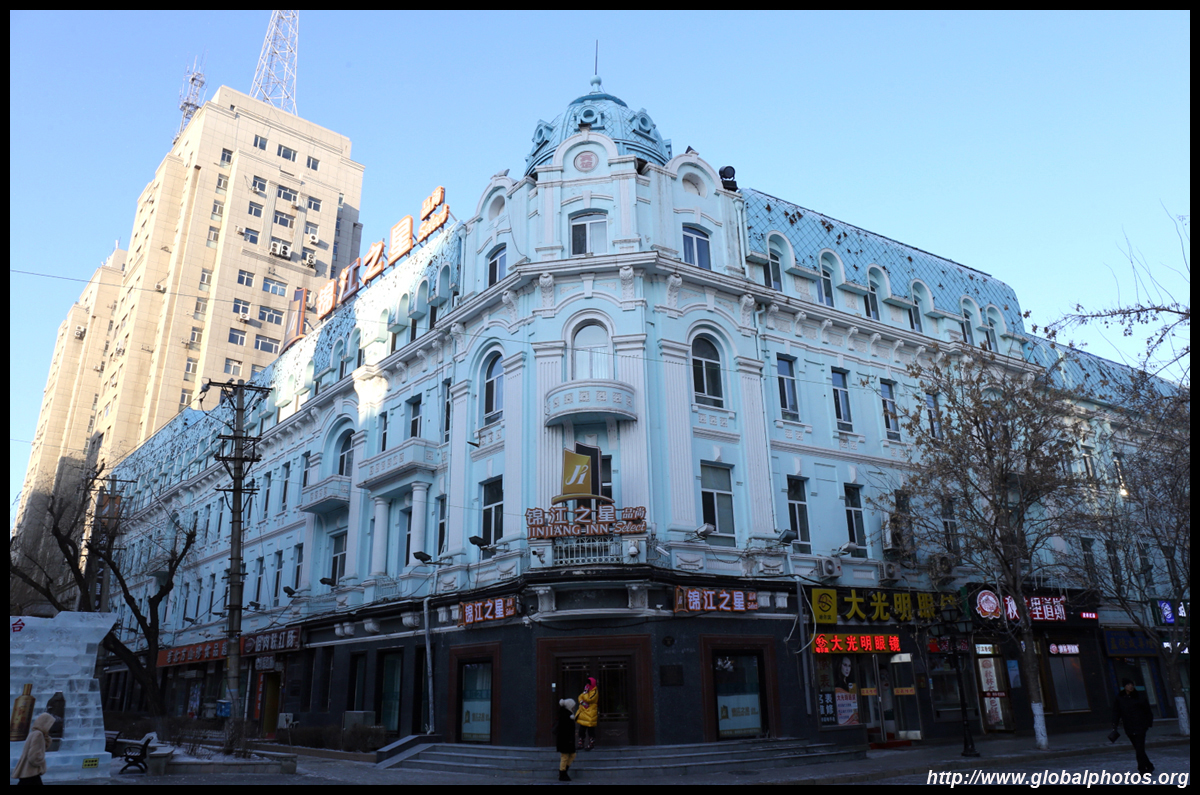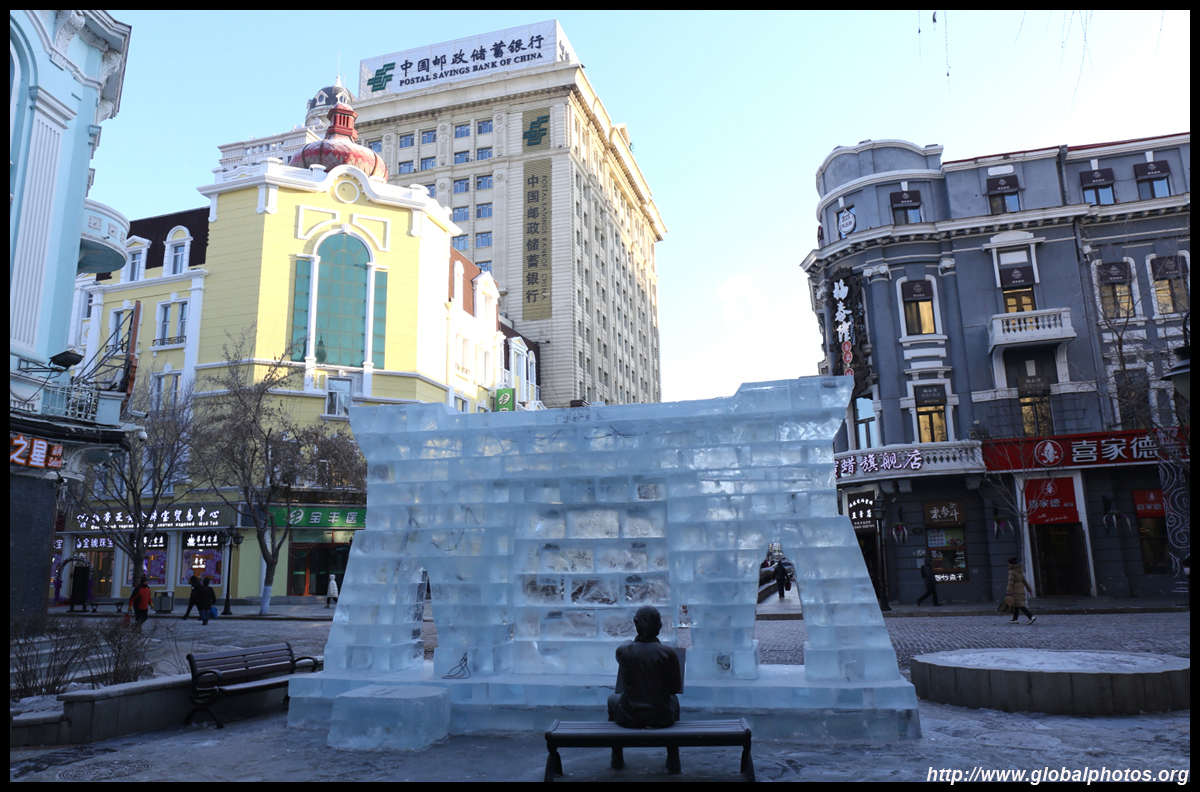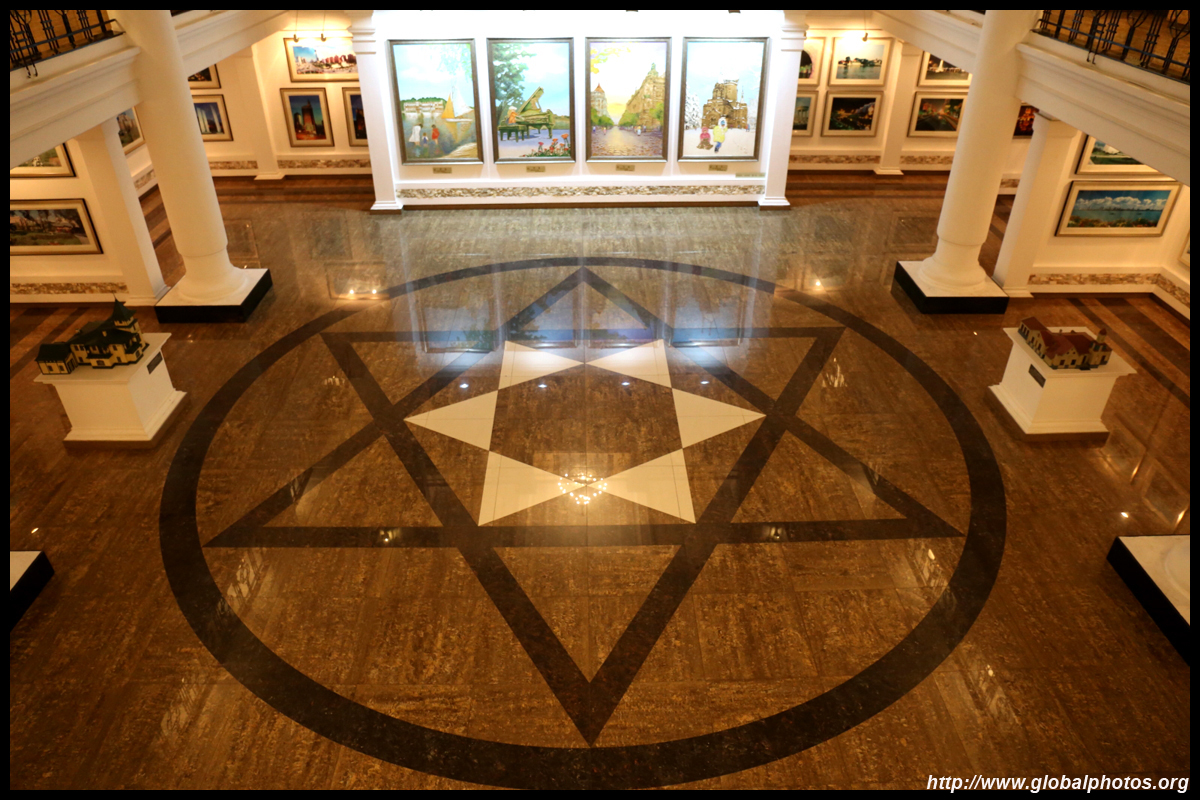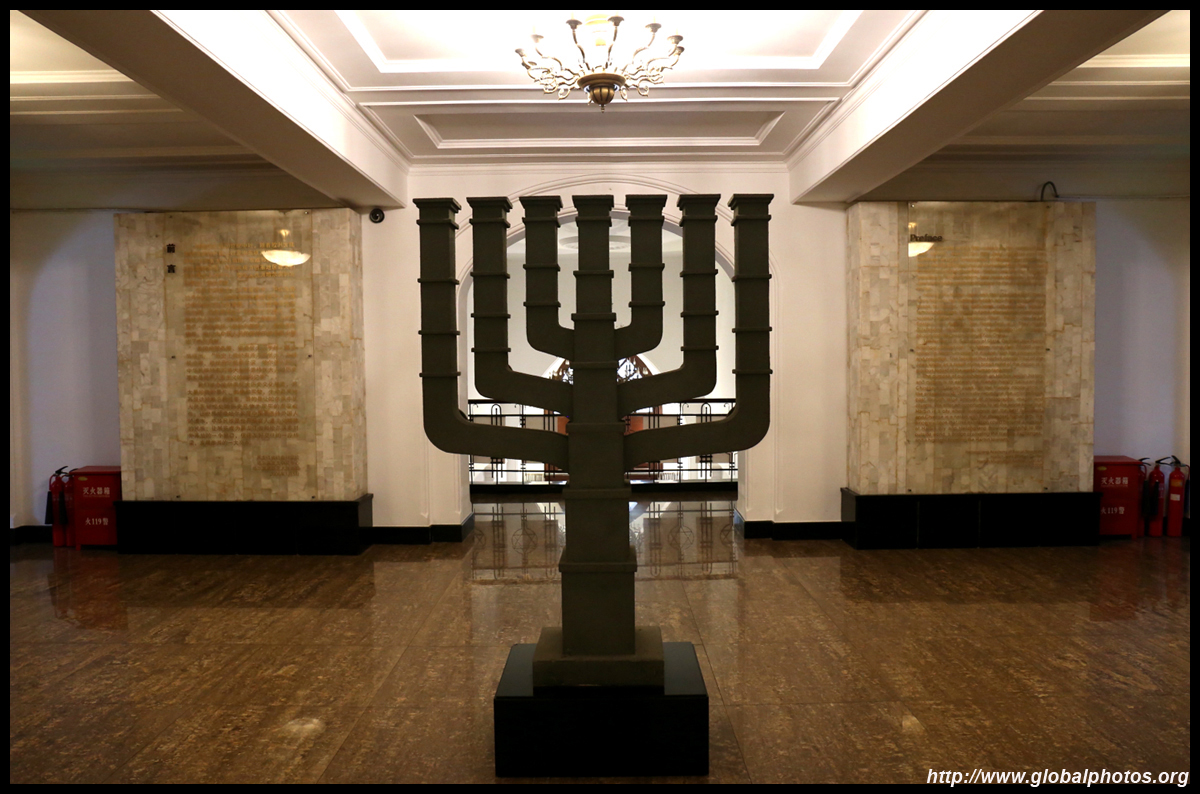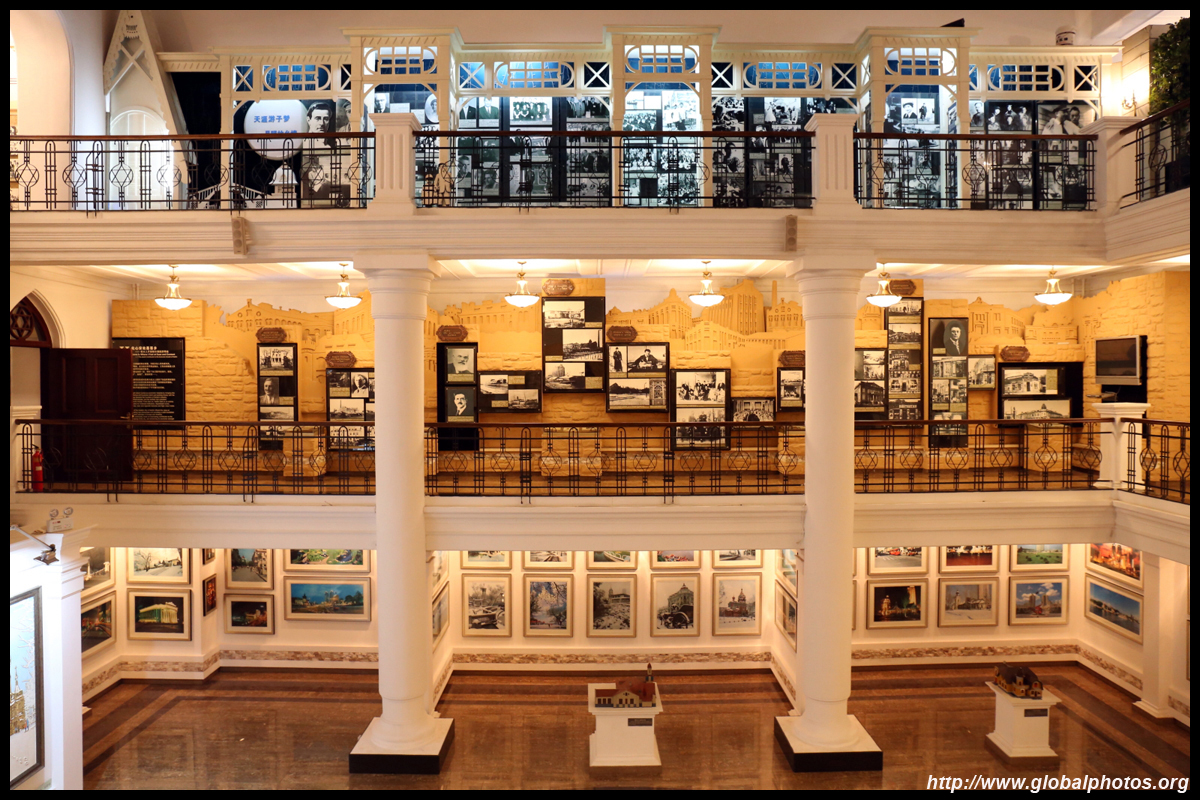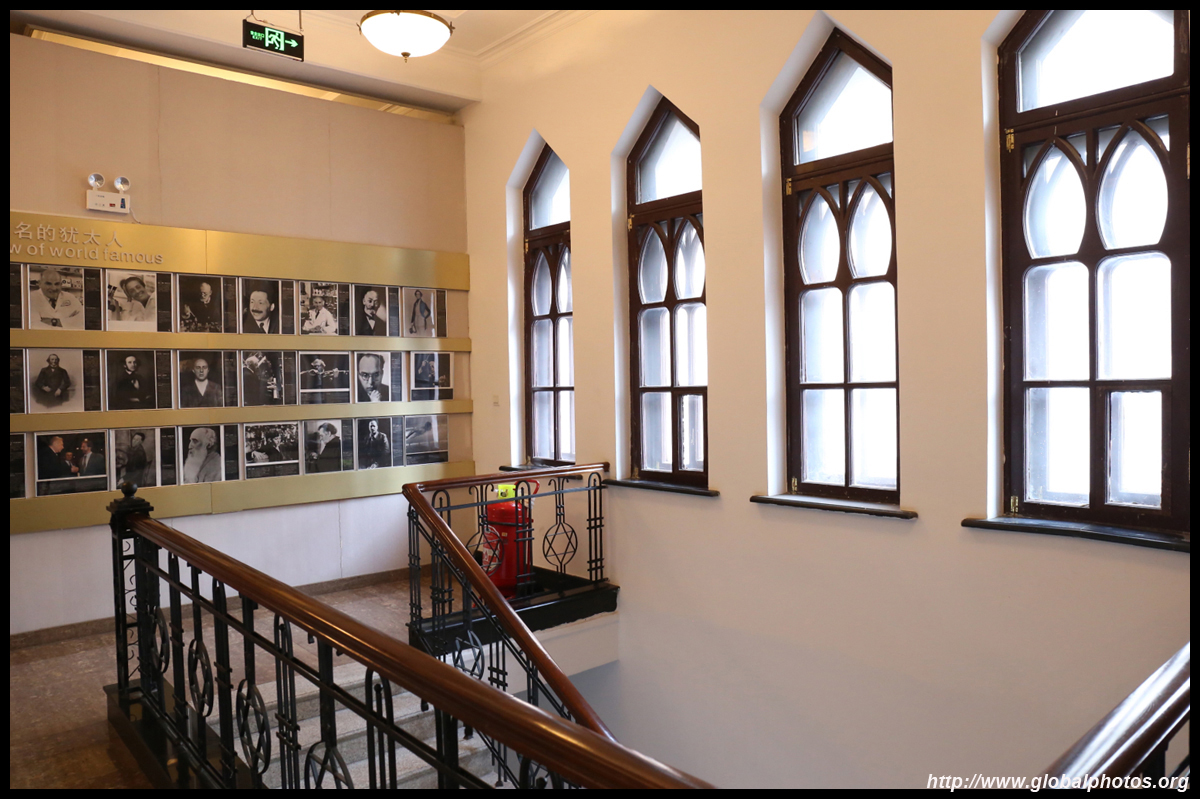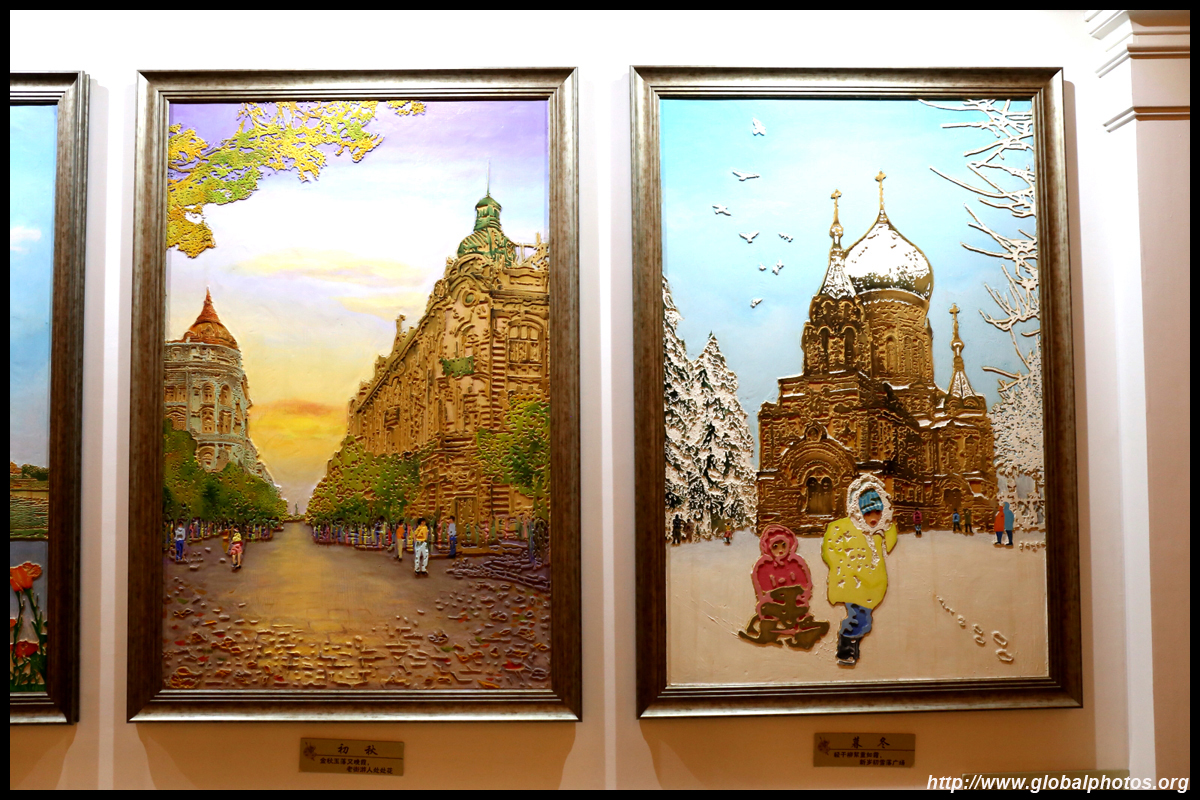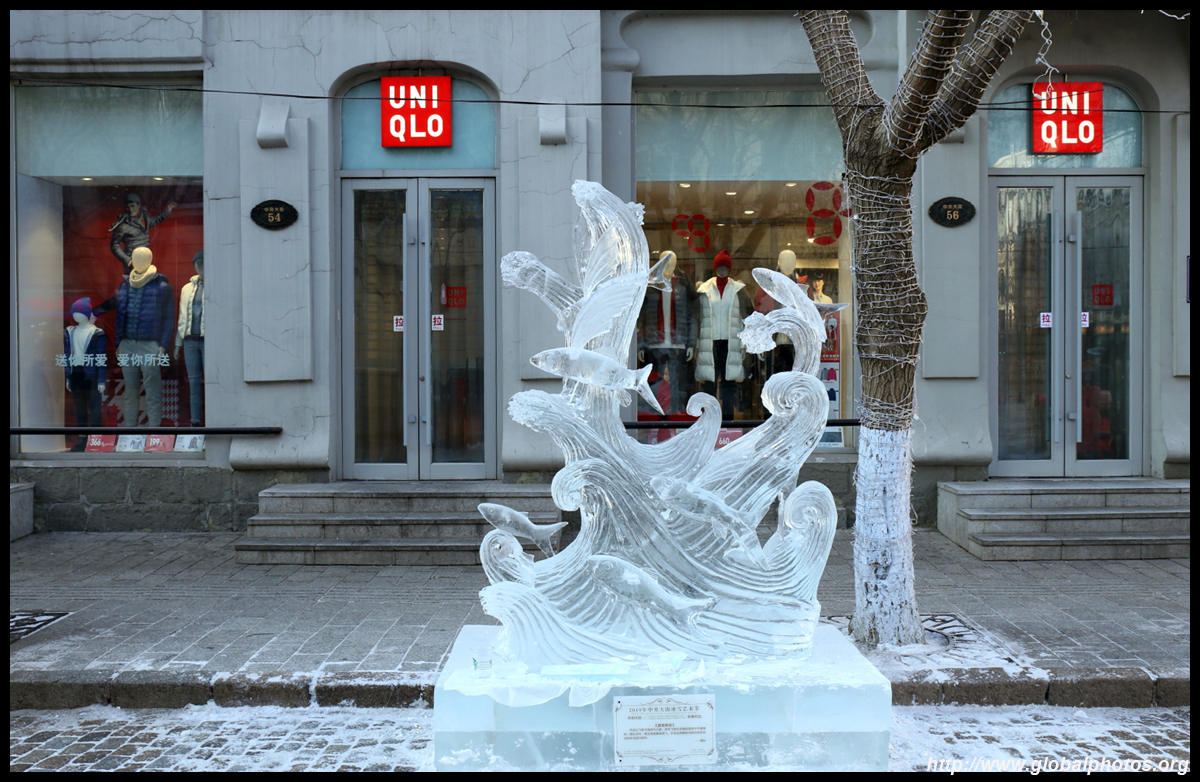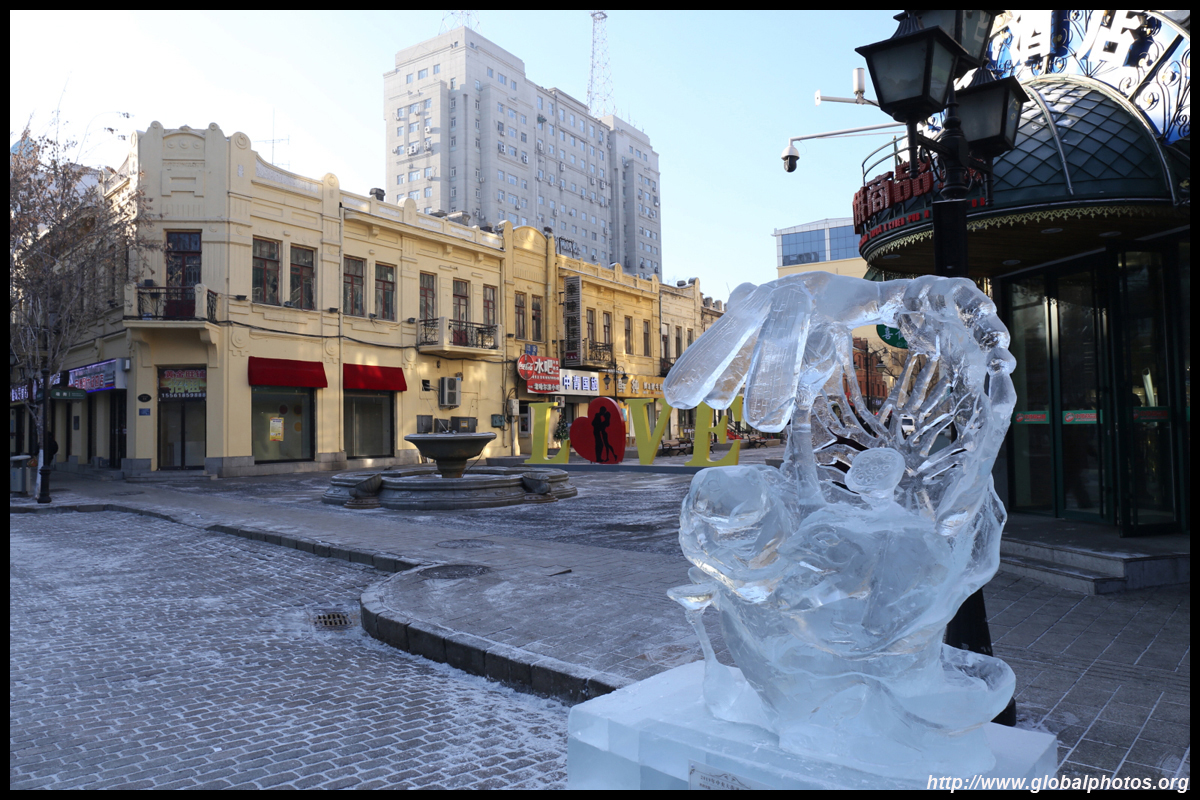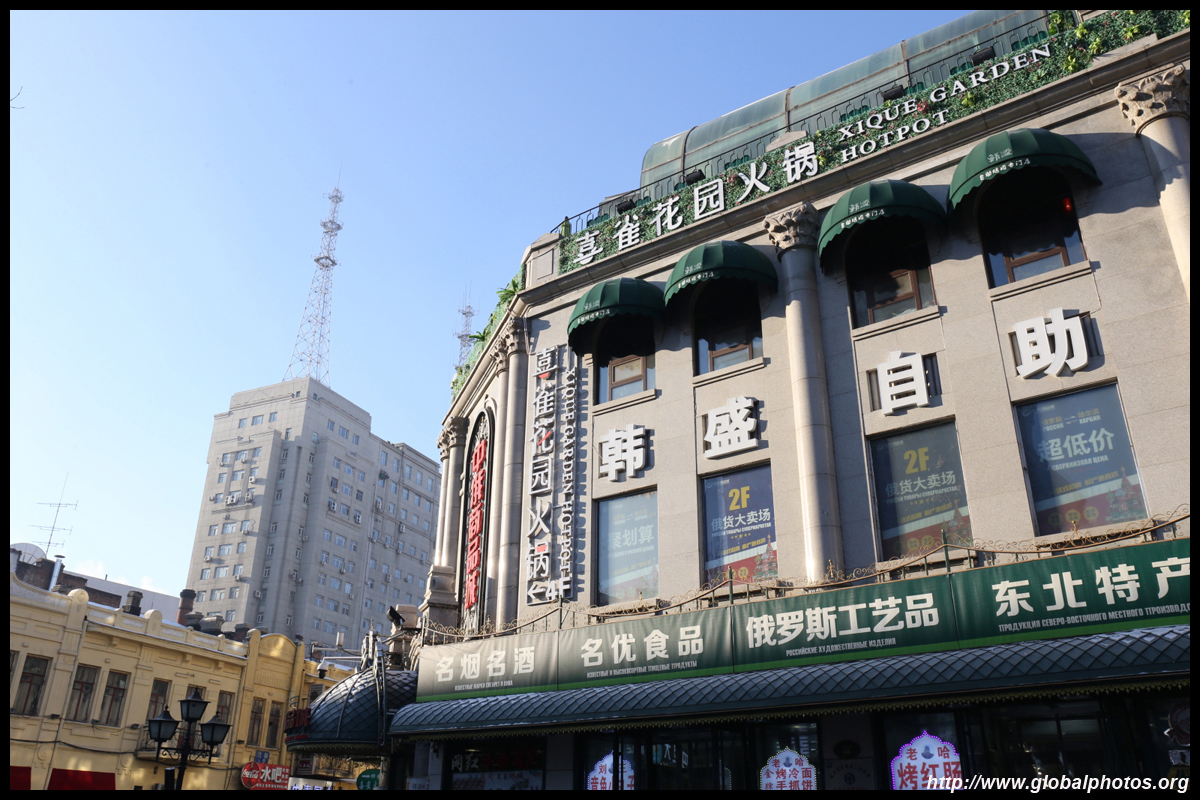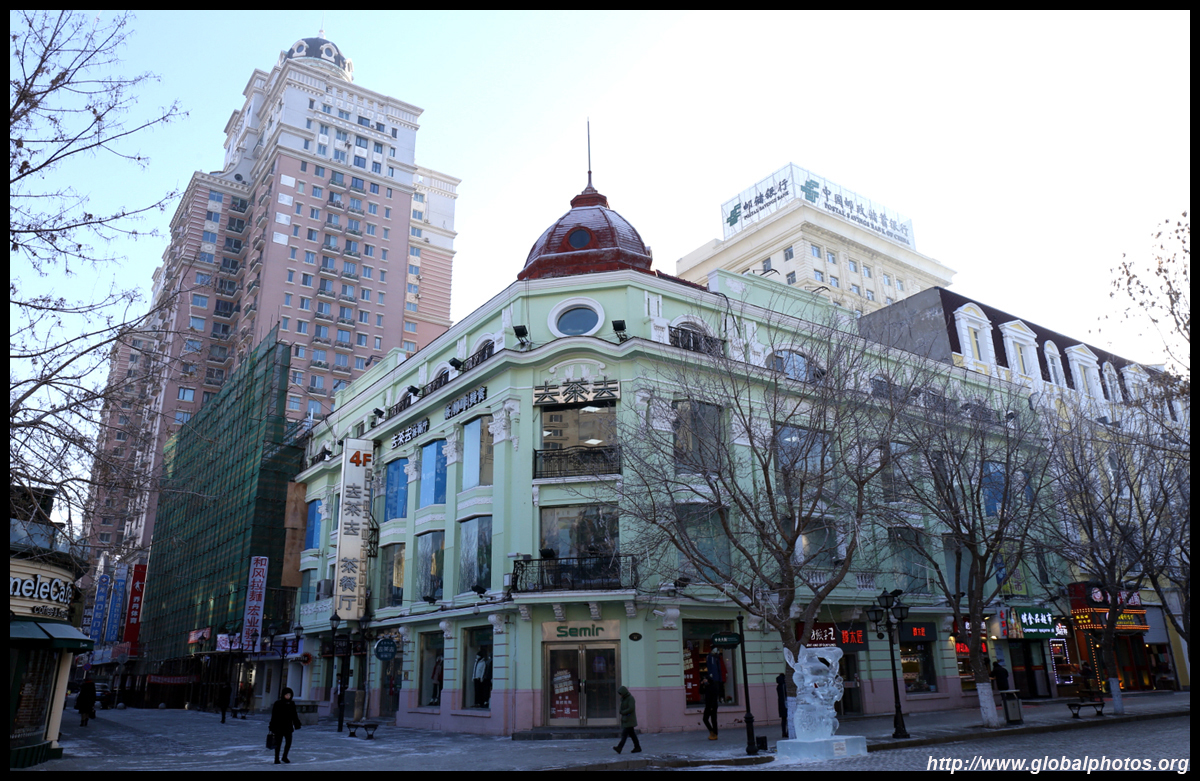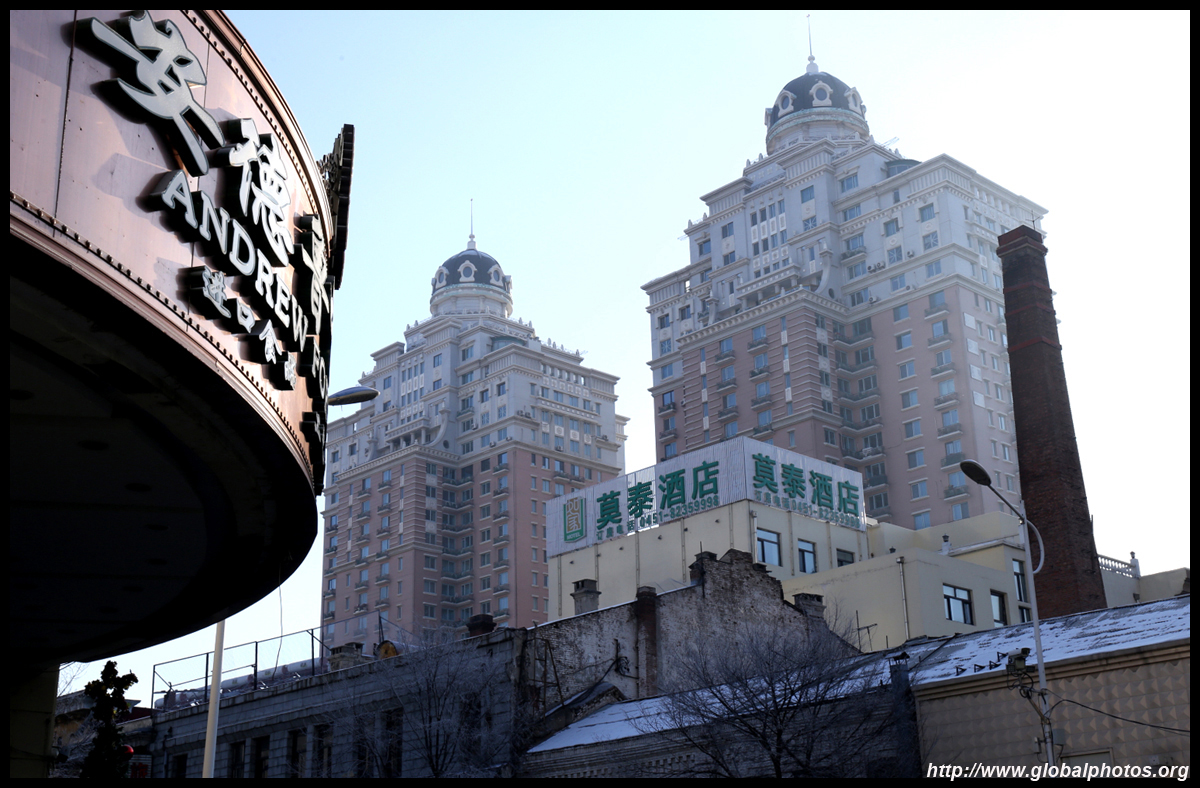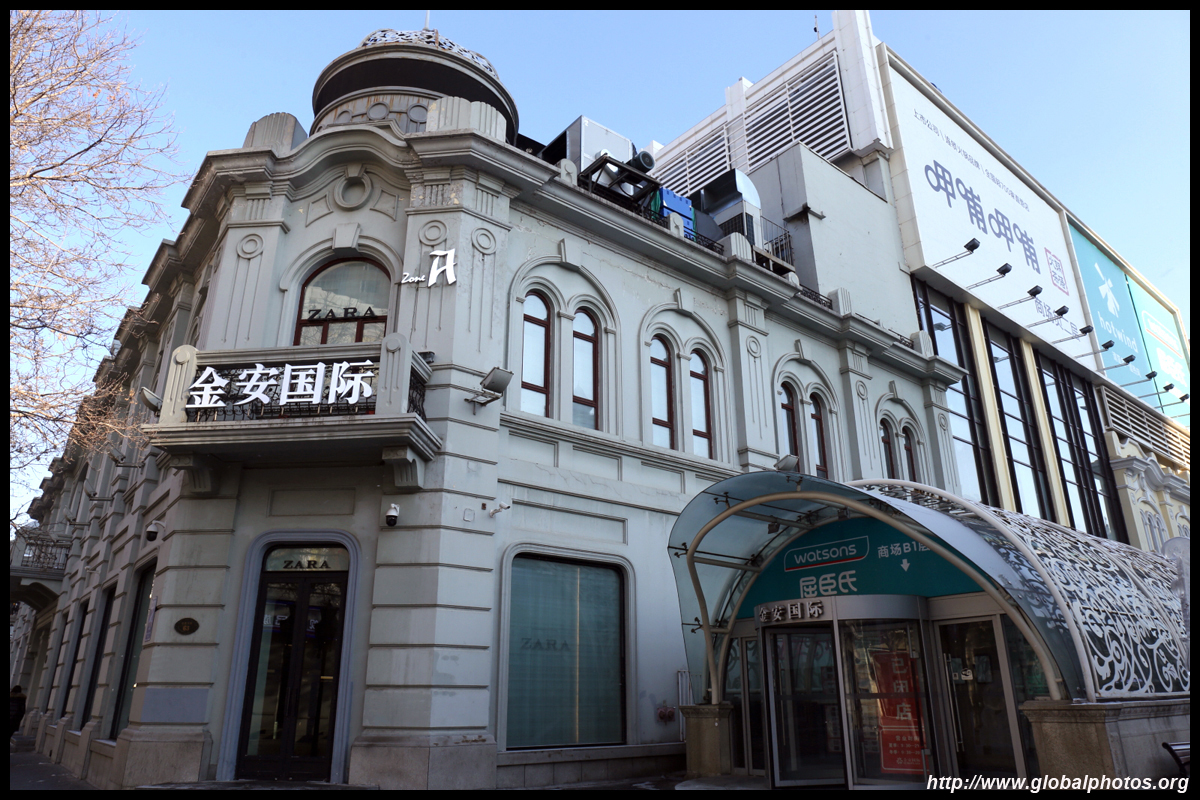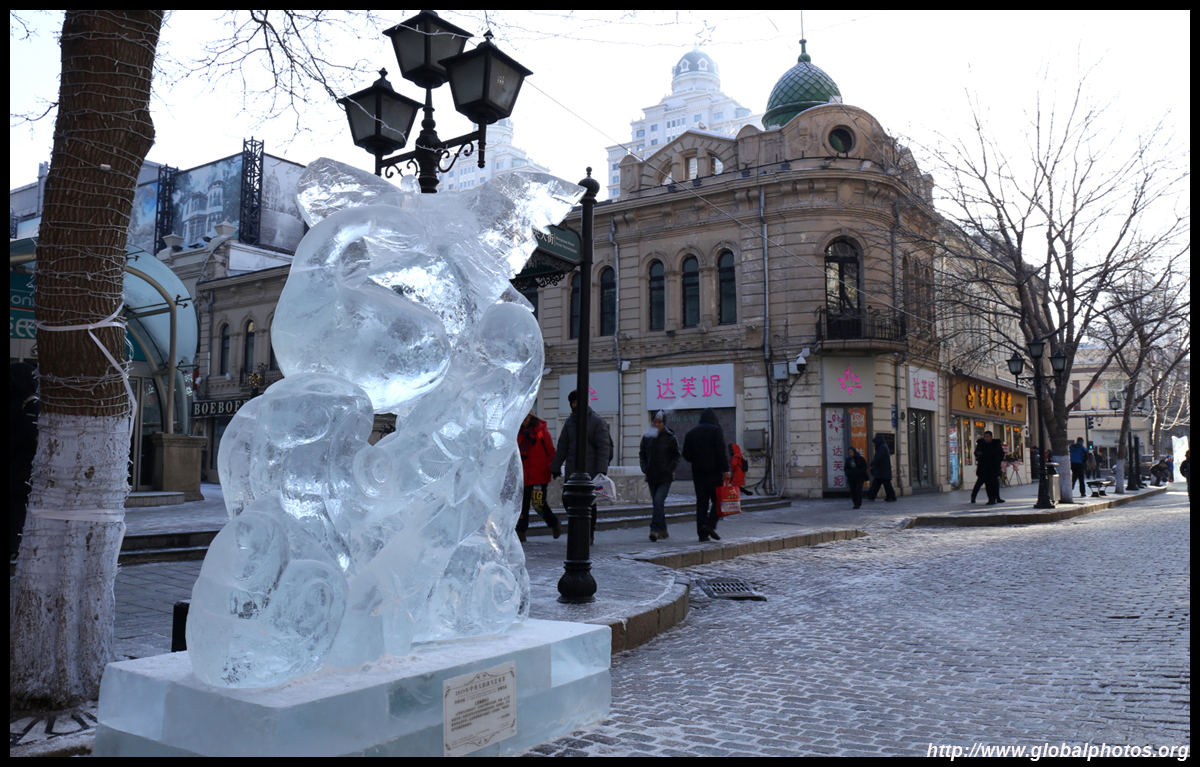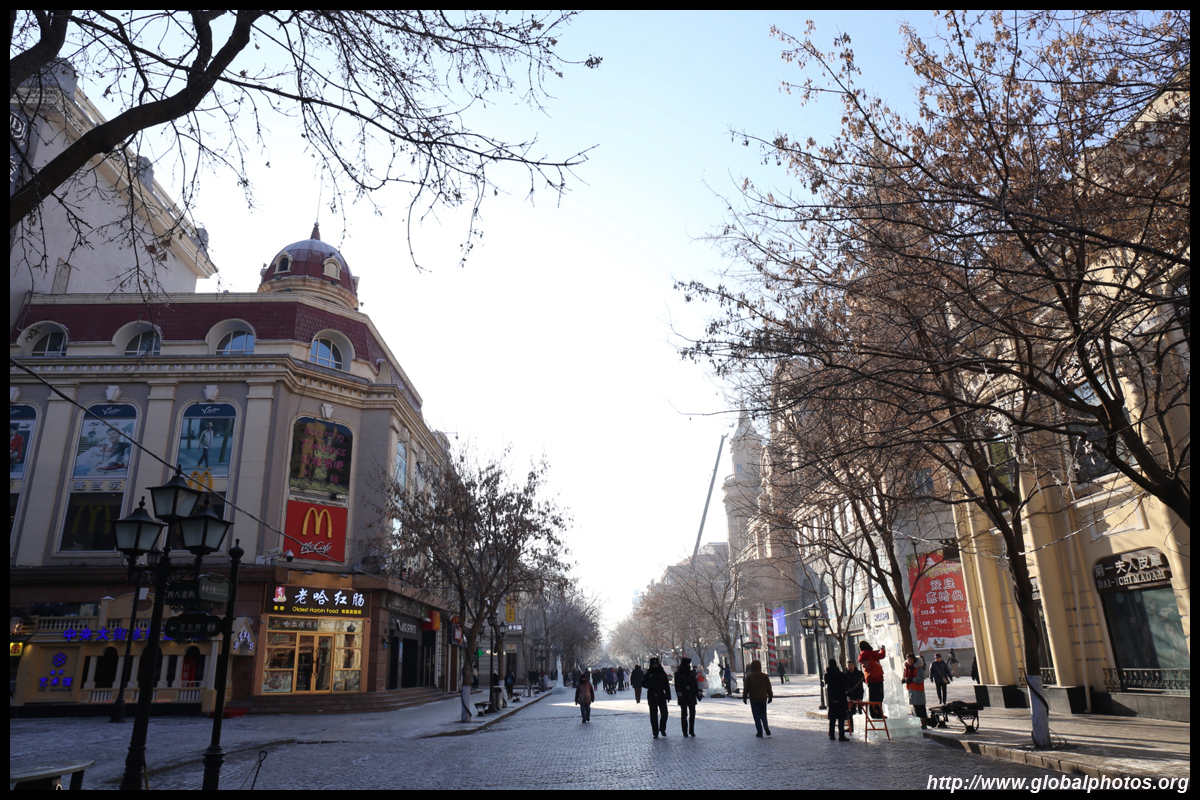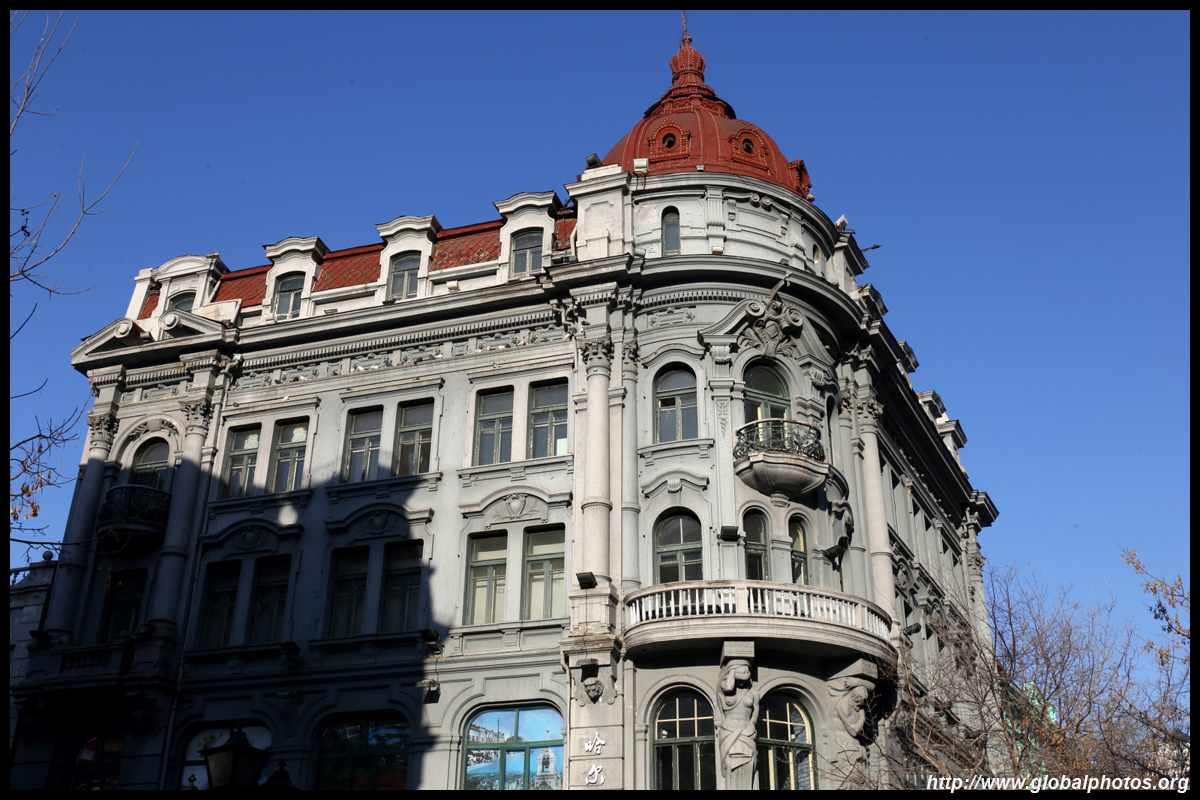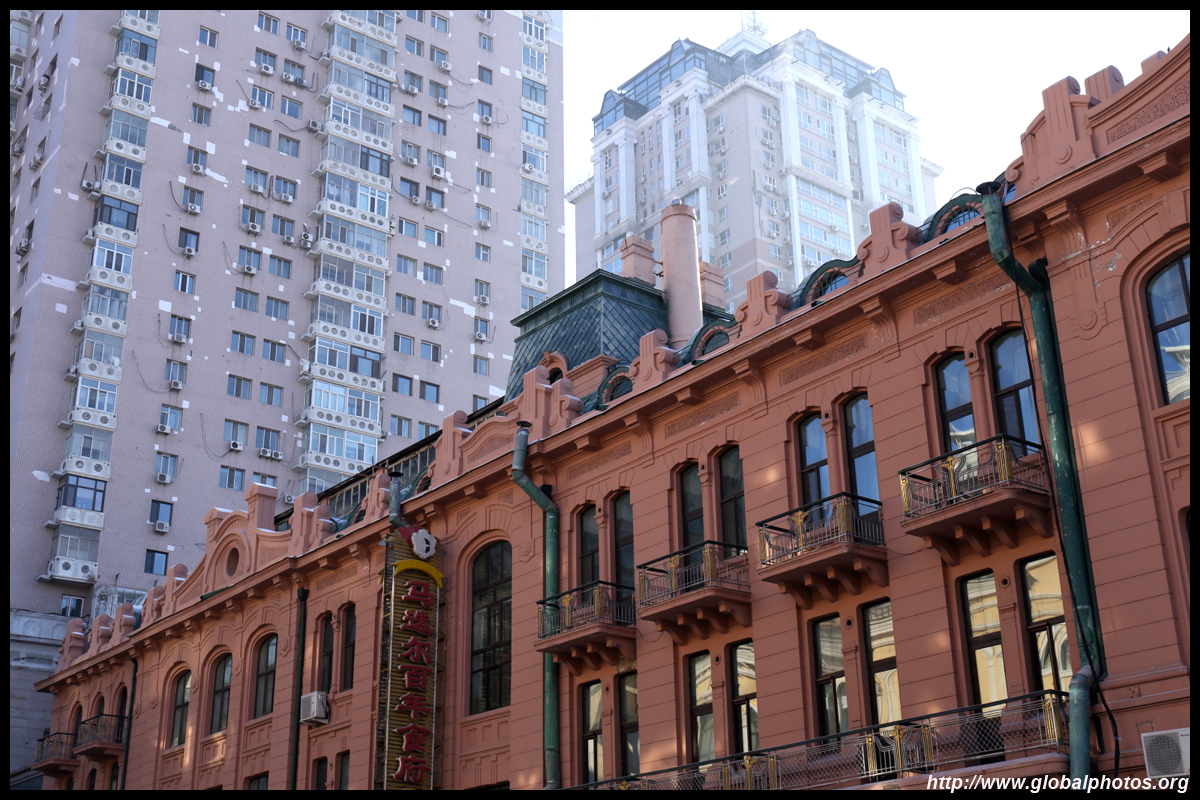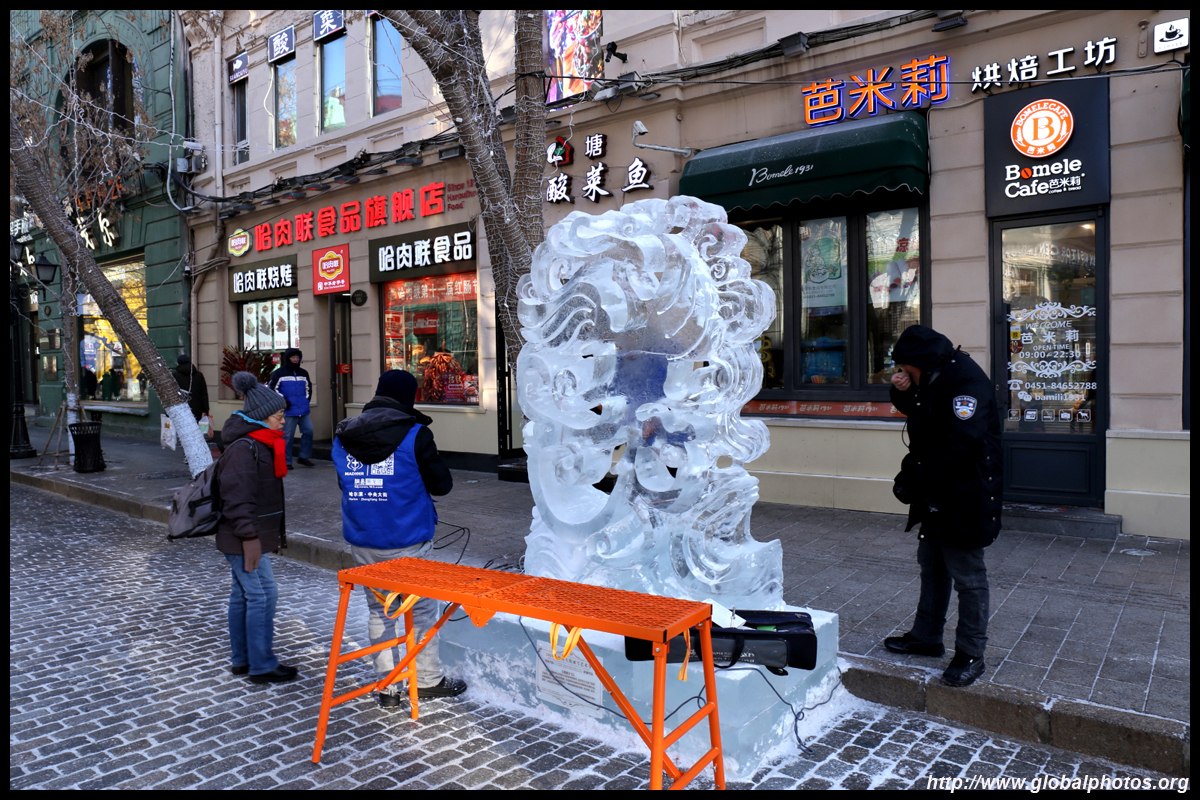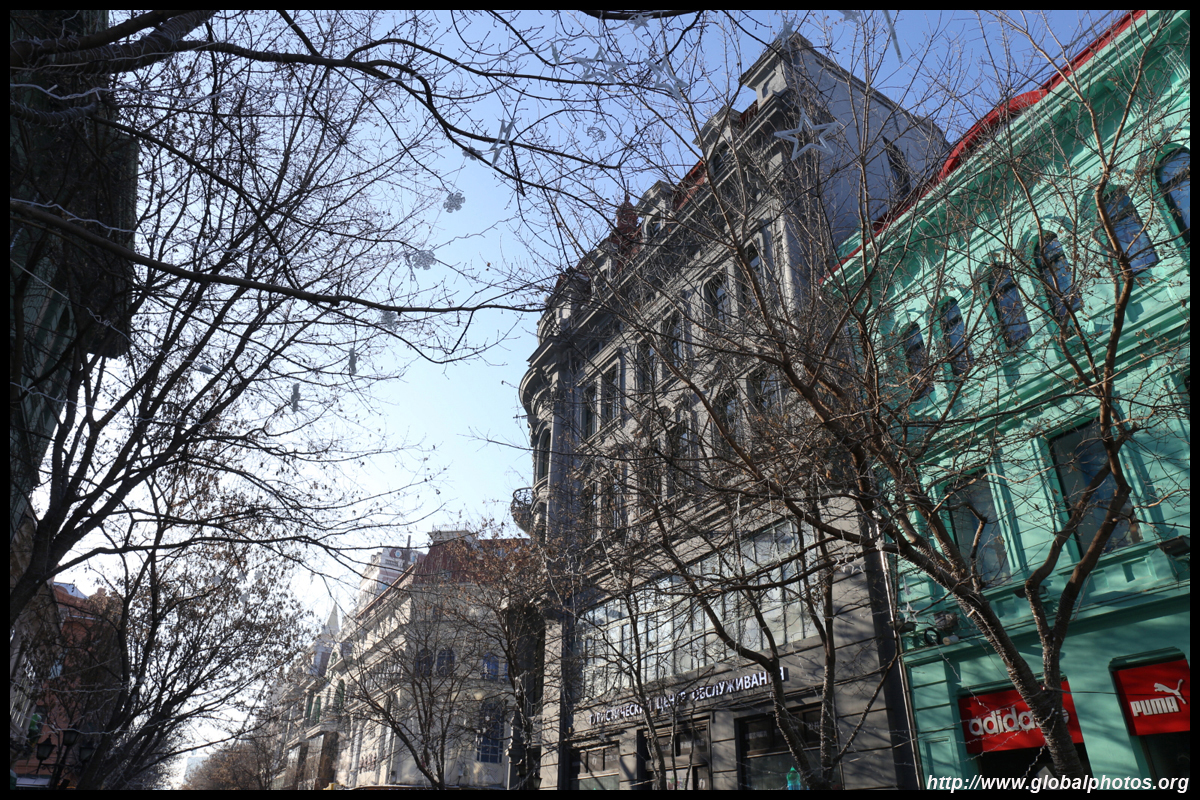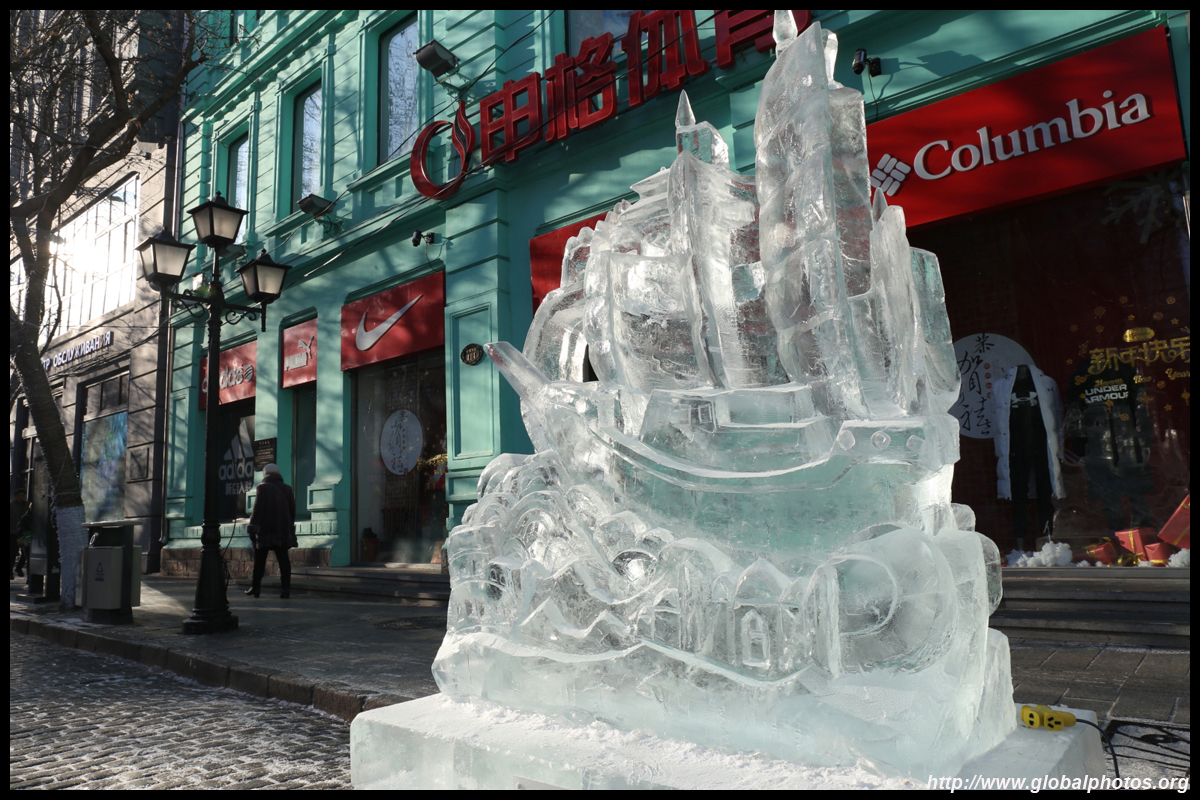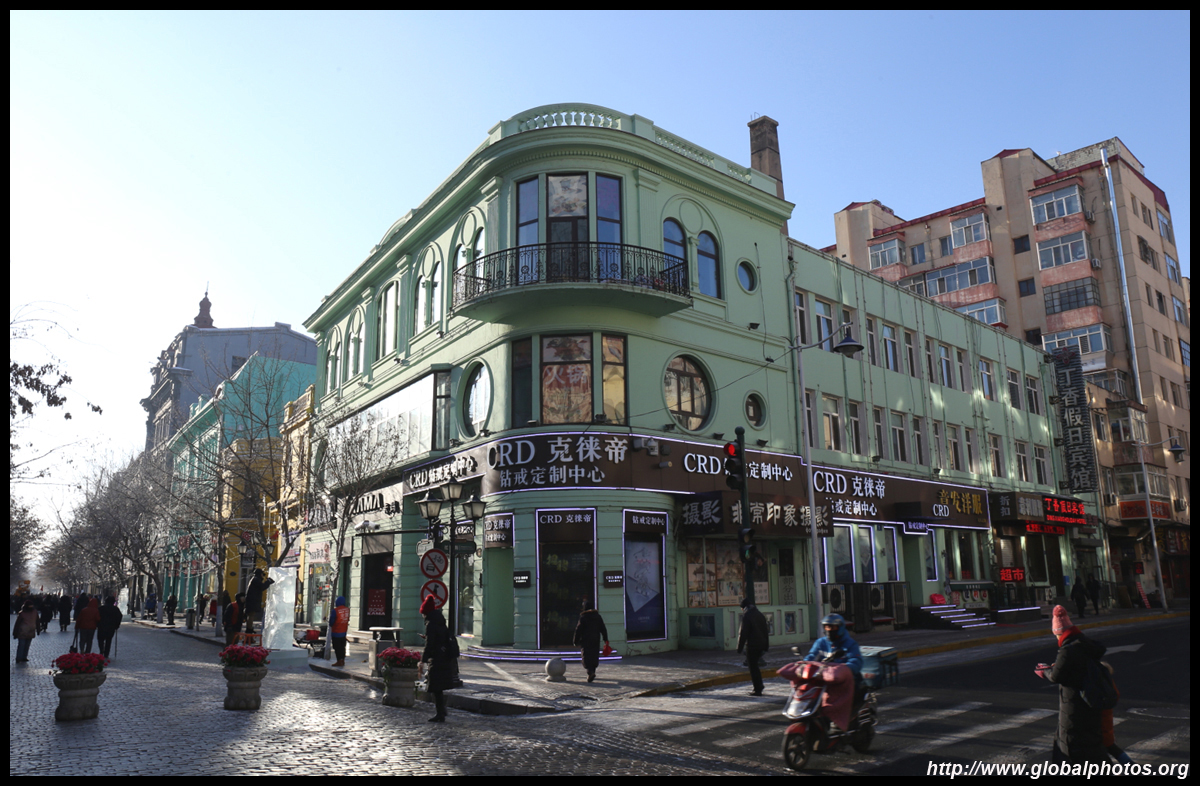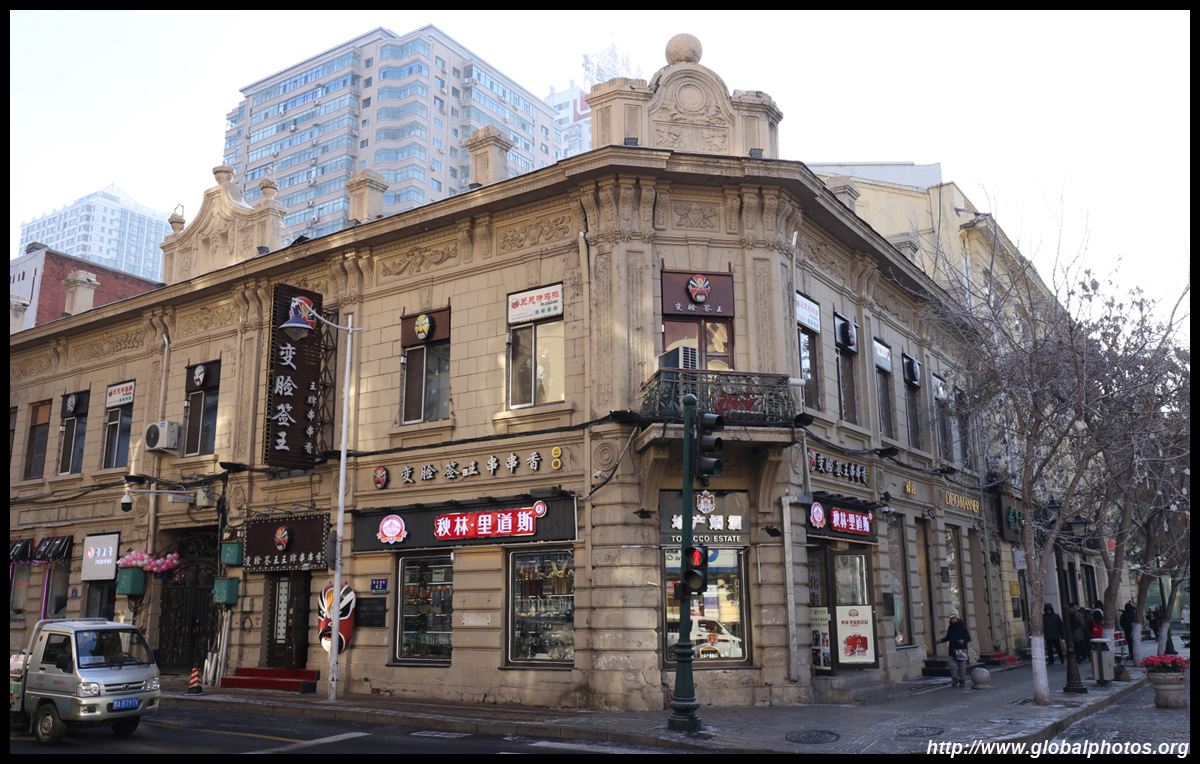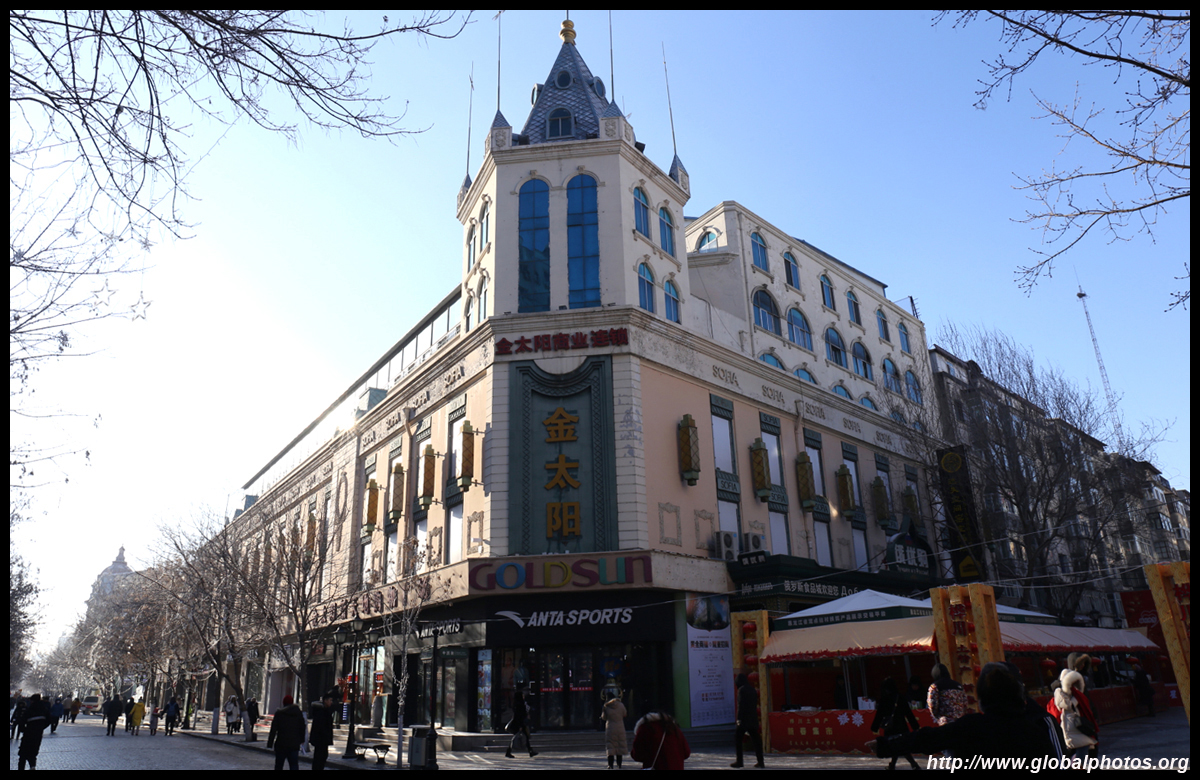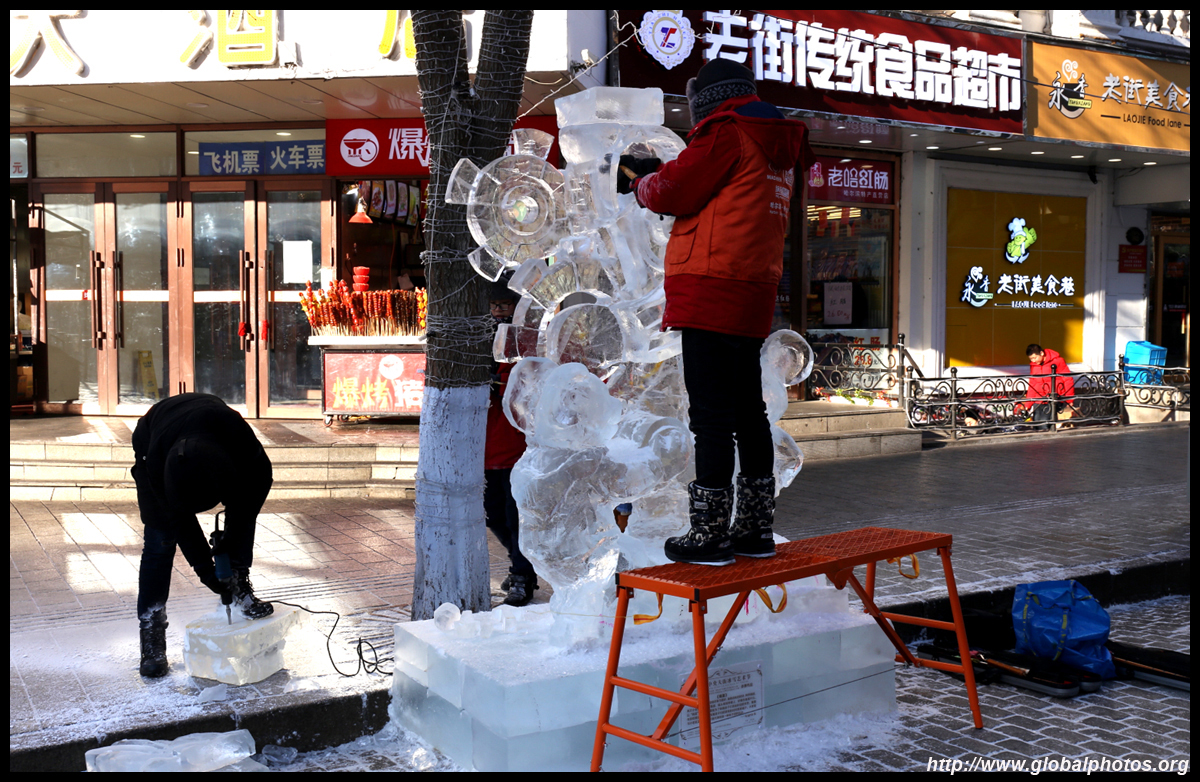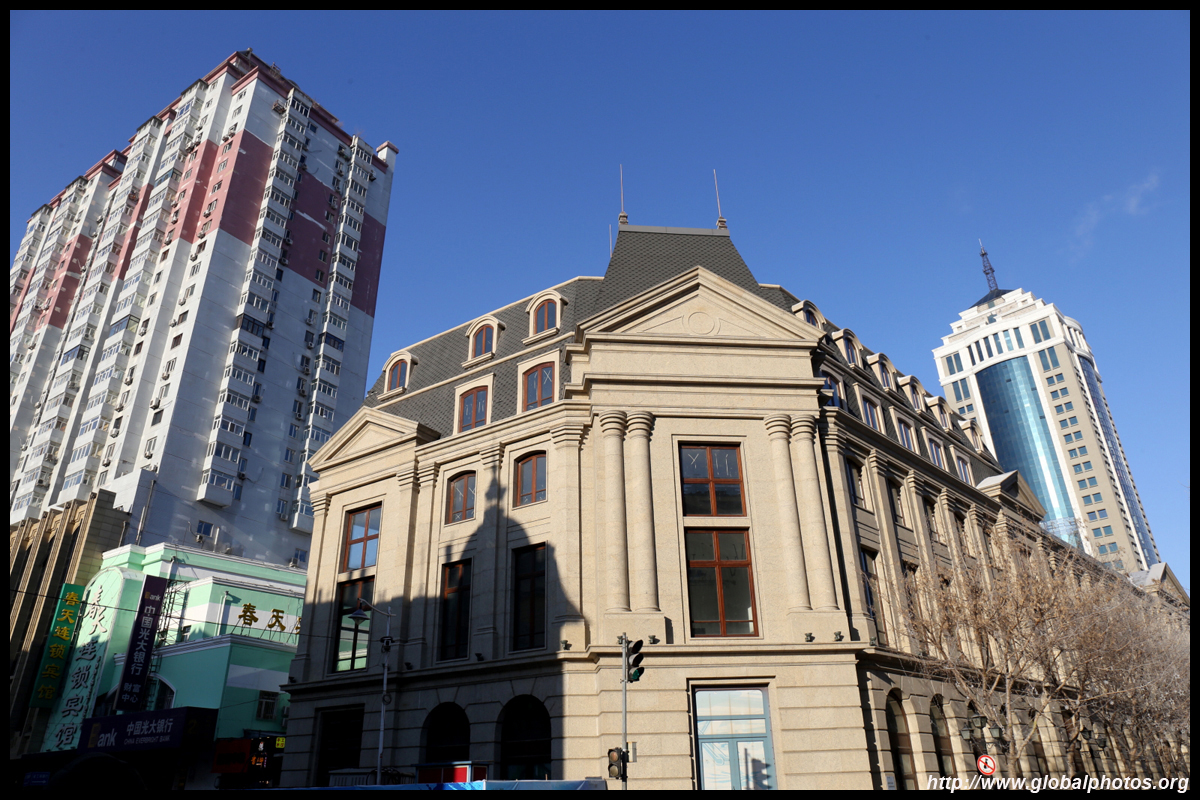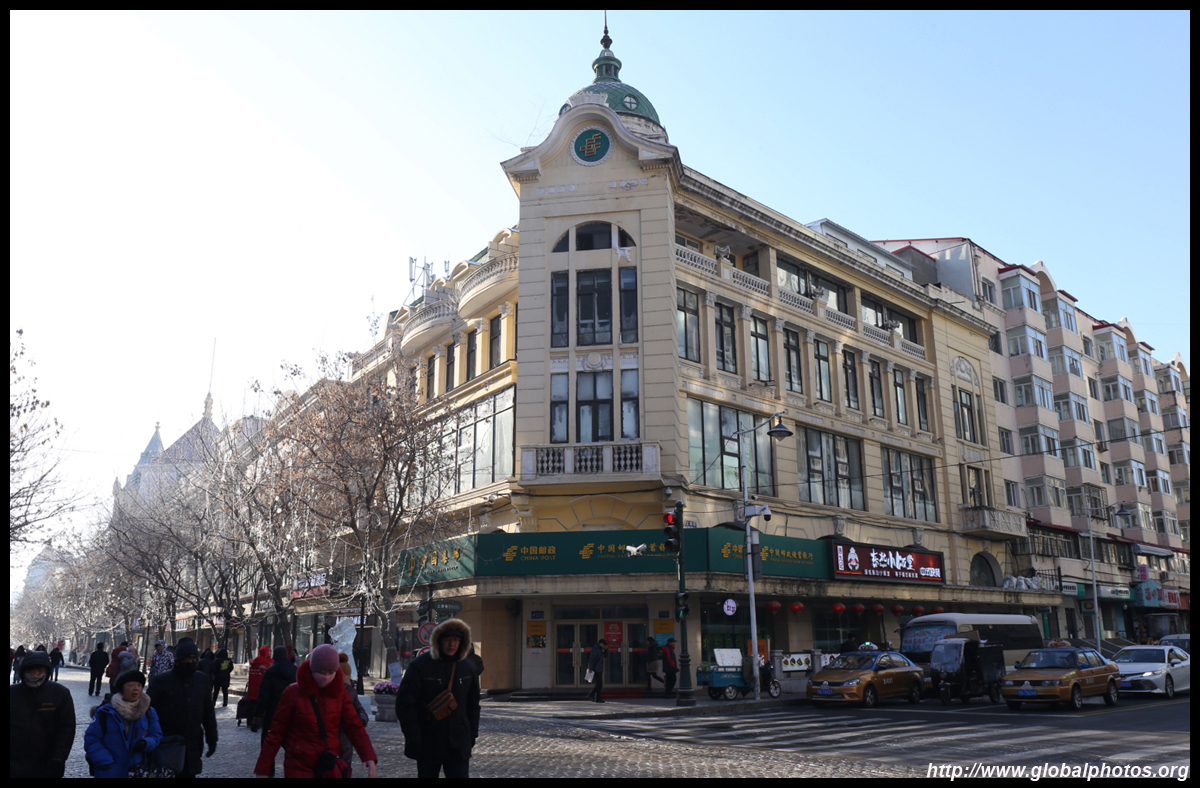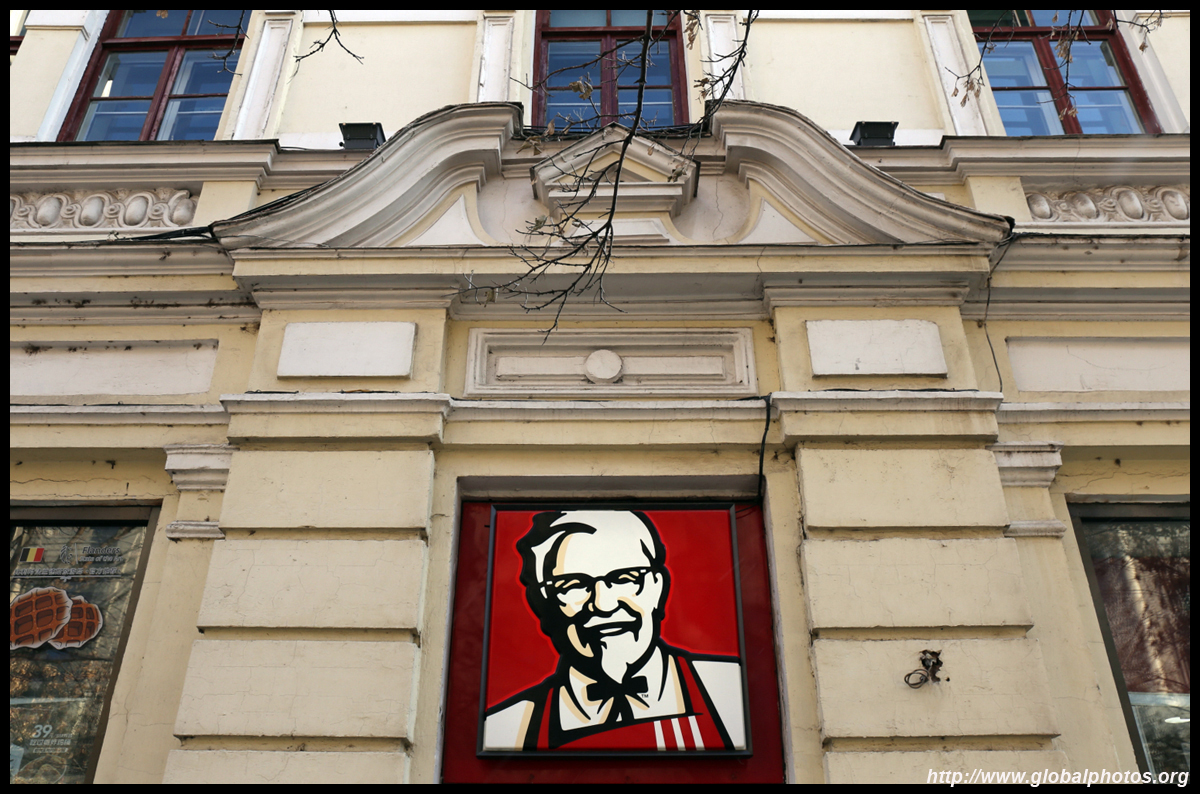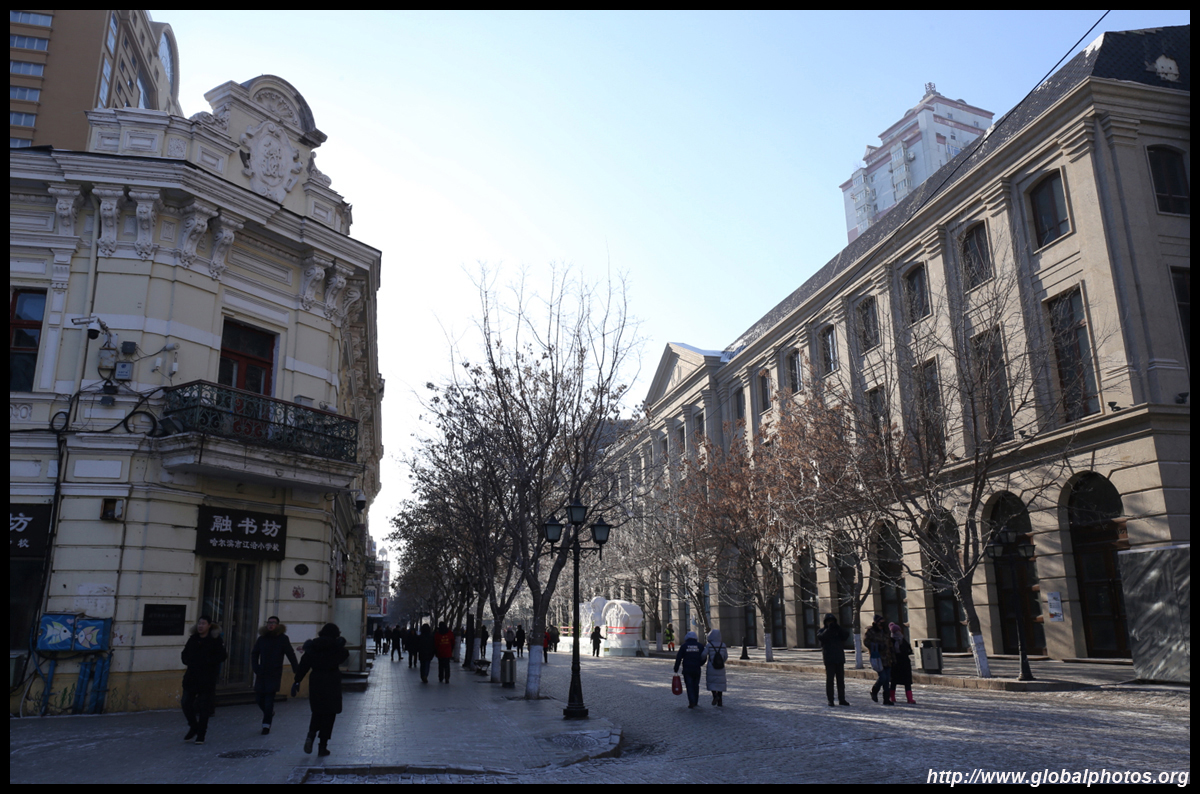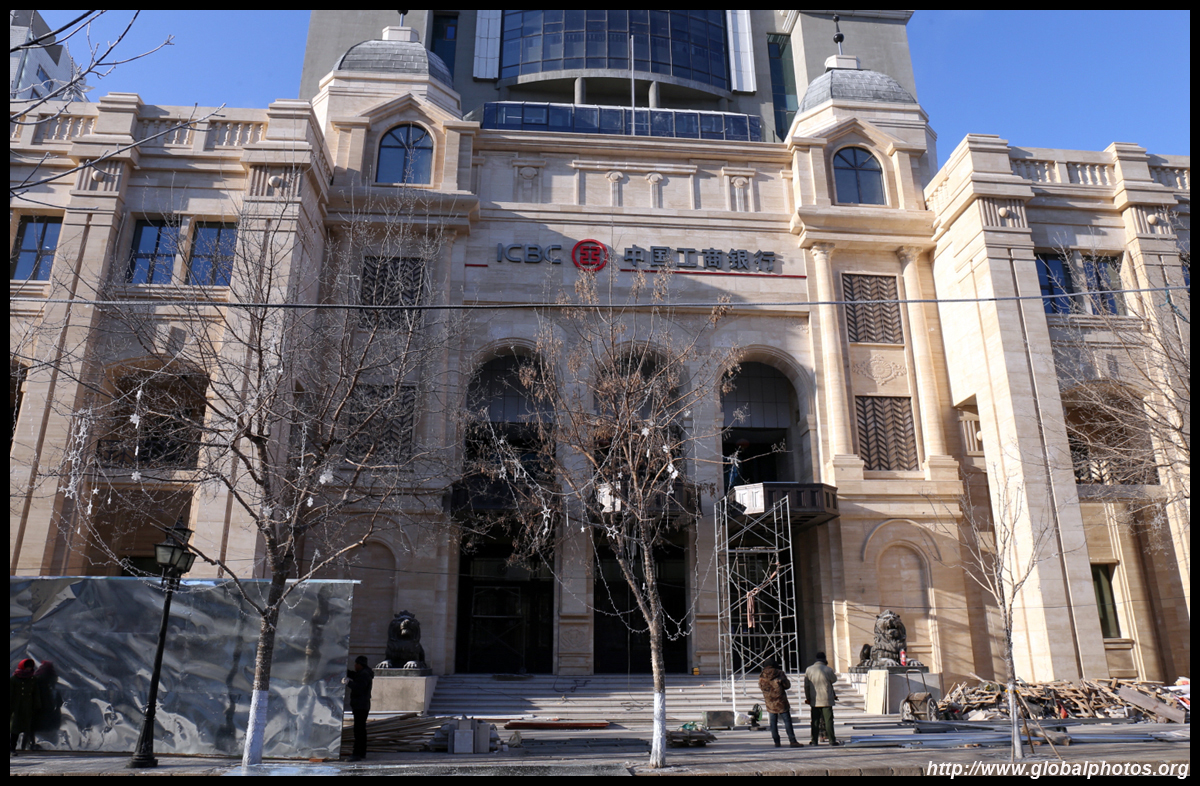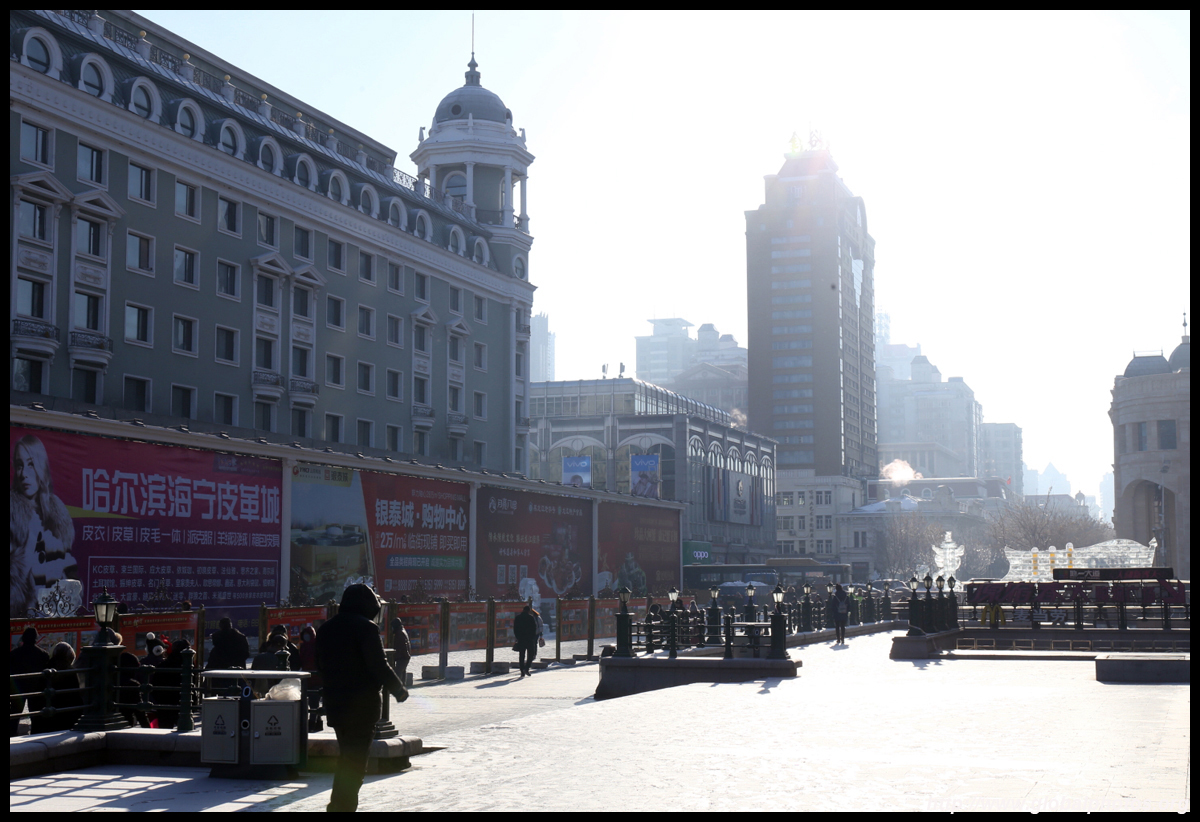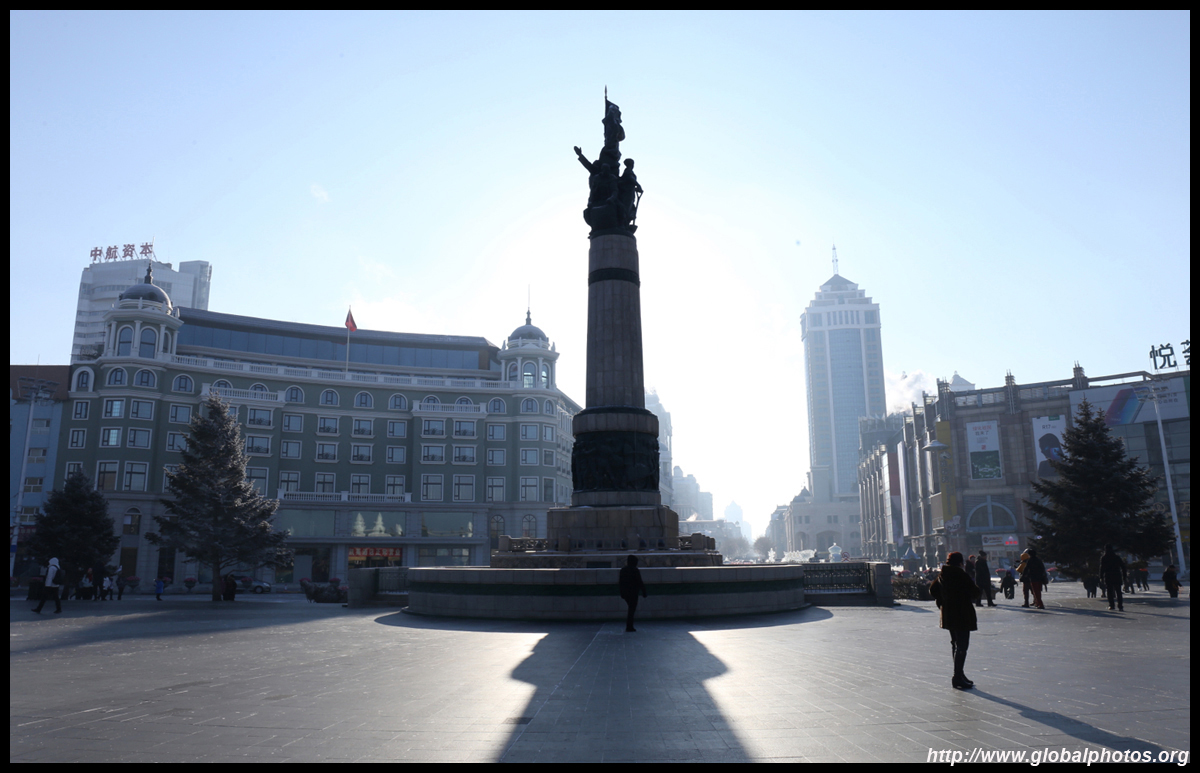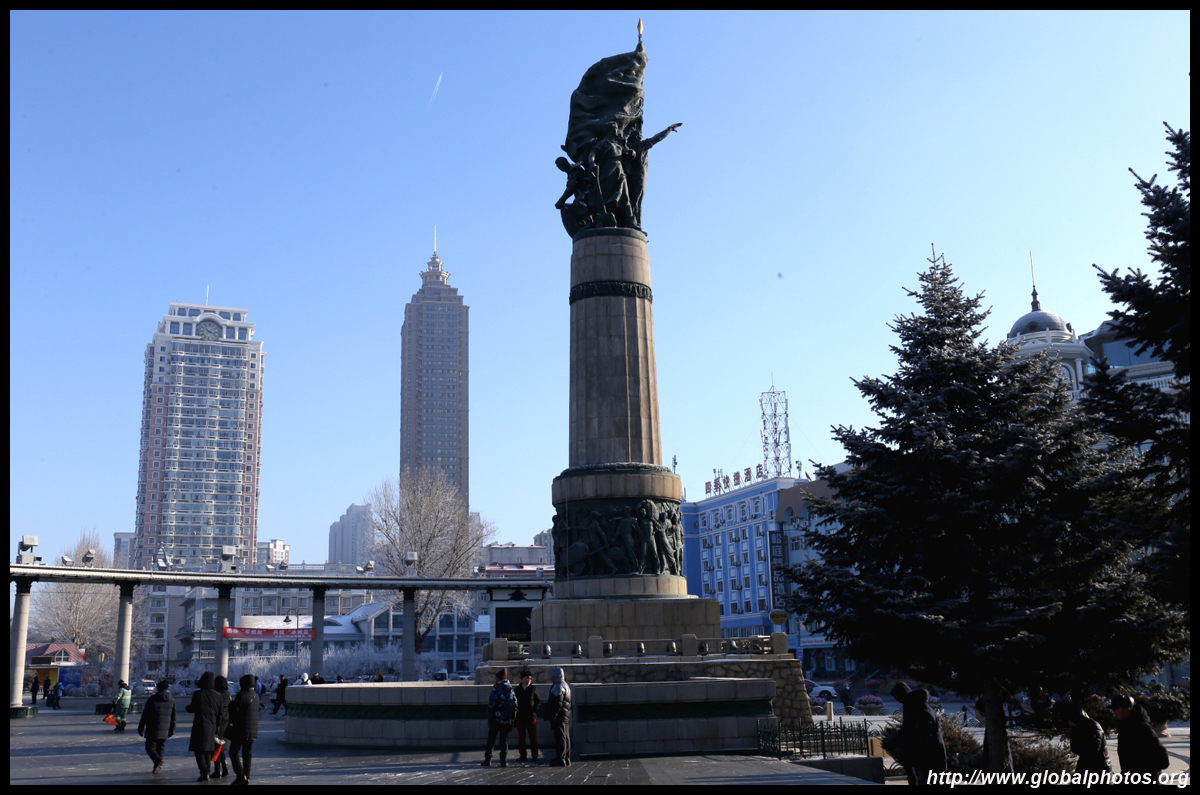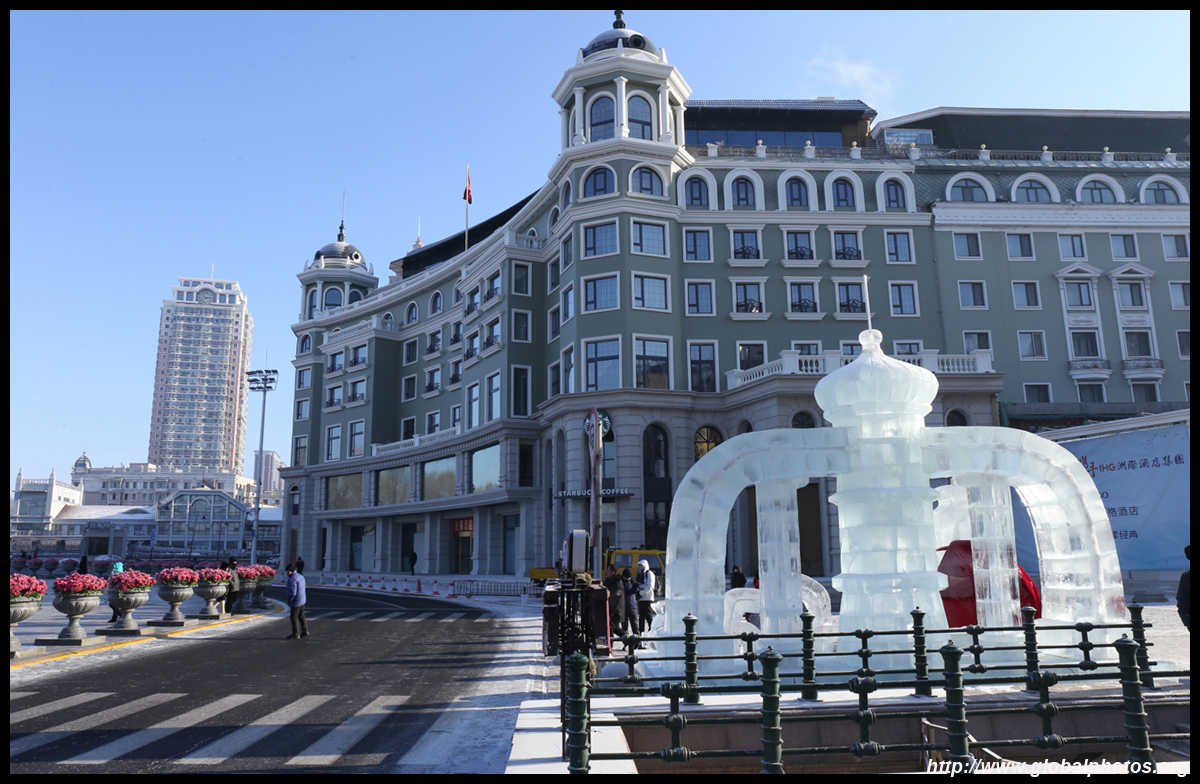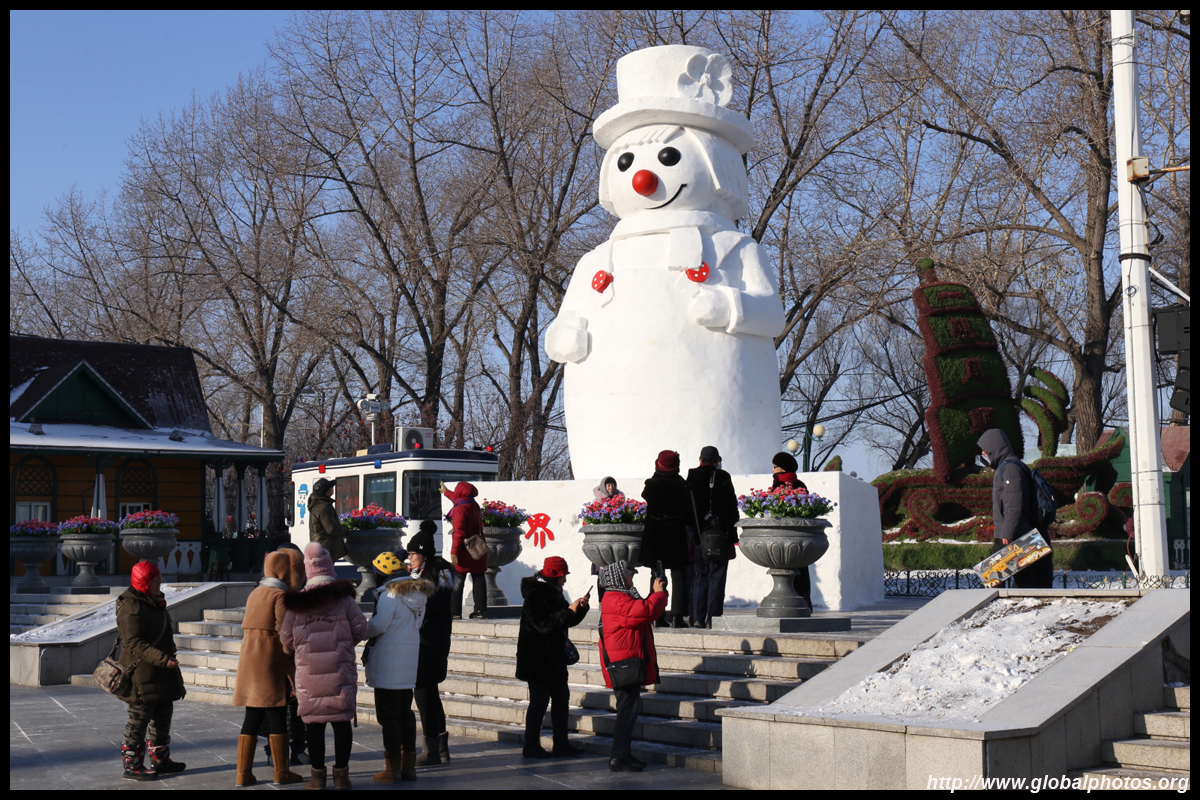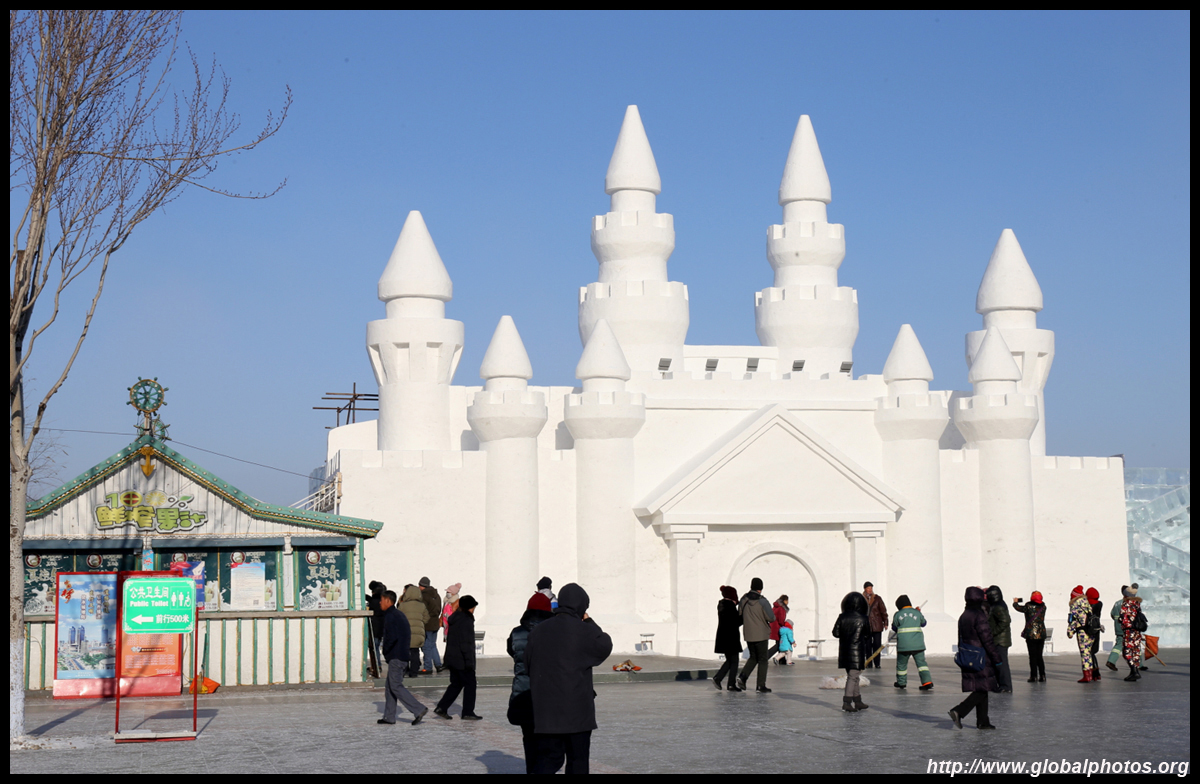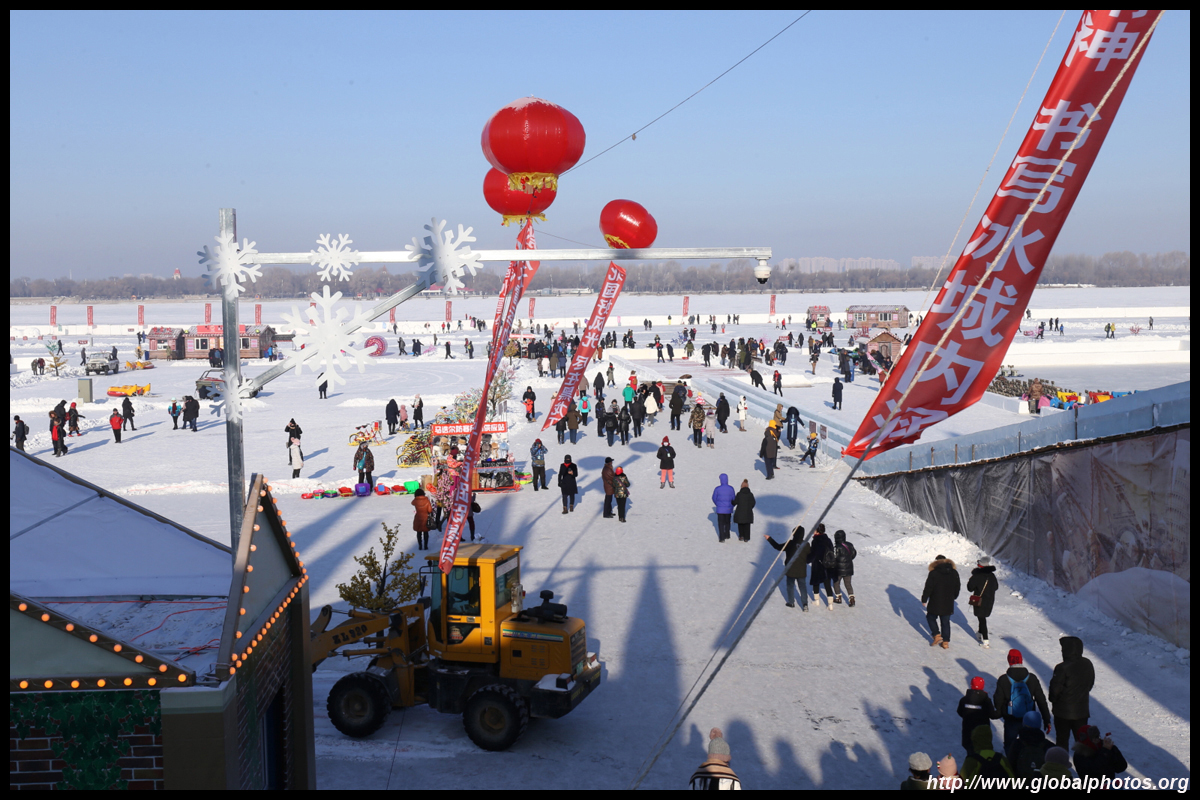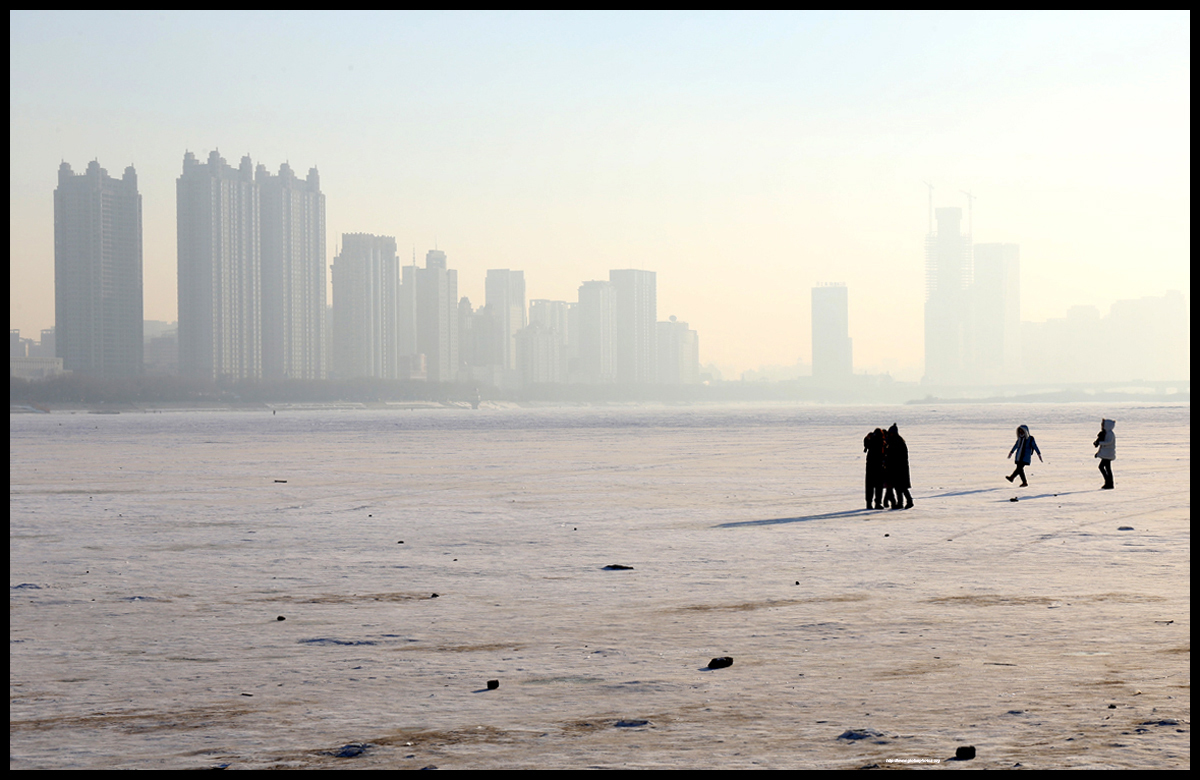Harbin Photo Gallery - City Centre

The Russians came to Harbin as part of their railroad-building efforts from Vladivostok, and their architectural legacy is still visible in the city today. St. Sophia was built in 1907 and is the largest Orthodox church in the Far East.
Otherwise, the city streets look a bit dreary and gritty. This is not Beijing or Shanghai, but in the more remote outskirts of the country.
Ice sculptures are not only visible in the parks that charge an arm and a leg. Artists also have many creations scattered around the city centre.
The New Jewish Synagogue was built in 1921 to acomodate over 800 worshippers. The Jewish community was once quite large in the city, numbering up to 25,000, and the synagogue is now a museum showcasing their history. At 25 yuan only, it is a bargain and the historic photos are quite fascinating.
Nearby, Central Street is now fully pedestrianized with many European-style buildings lining both sides, which were once mansions and facilities built by the wealthy Jewish business community. Much of the community fled the city during the Japanese invasion in World War II.
At the end of the street is the Flood Control Monument, which was built in 1958 and is now part of Stalin Park which stretches along the riverfront. With the river frozen behind it, there are all sorts of activities available, including ice bicycles and slides.
Adventurous tourists can choose to walk across the river to Sun Island's snow festival. There is no prescribed route on where it starts or ends but as a general rule of thumb, follow the cable car above. The station on the other side is only a short walk from the festival's entrance. For more seated comfort, the cable car costs 50 yuan one-way and 80 for return.
As the river is frozen and it is ice beneath, it can get slippery. Stay on snow cover for better friction. The crossing isn't too long and soon you will emerge on the sandy beach bank of Sun Island. The waterfront on this side has been barricaded for the season except the staircase to the left of the cable car station.
|
|||
